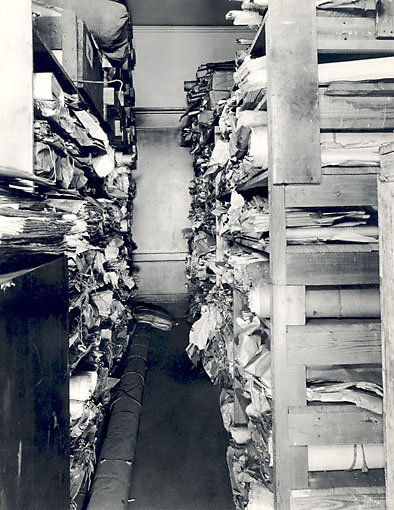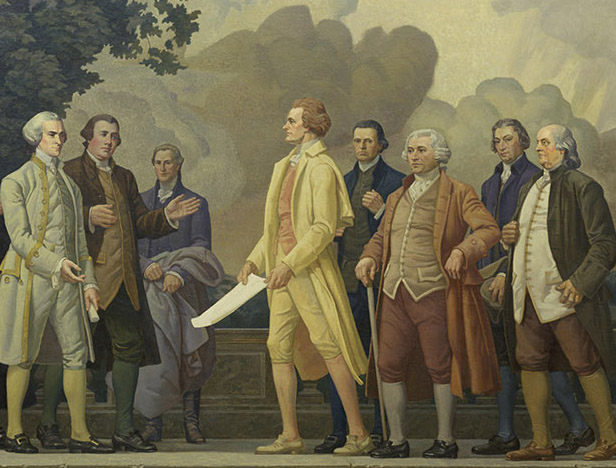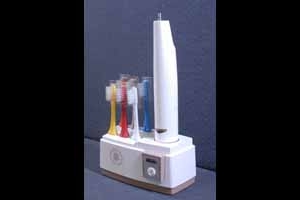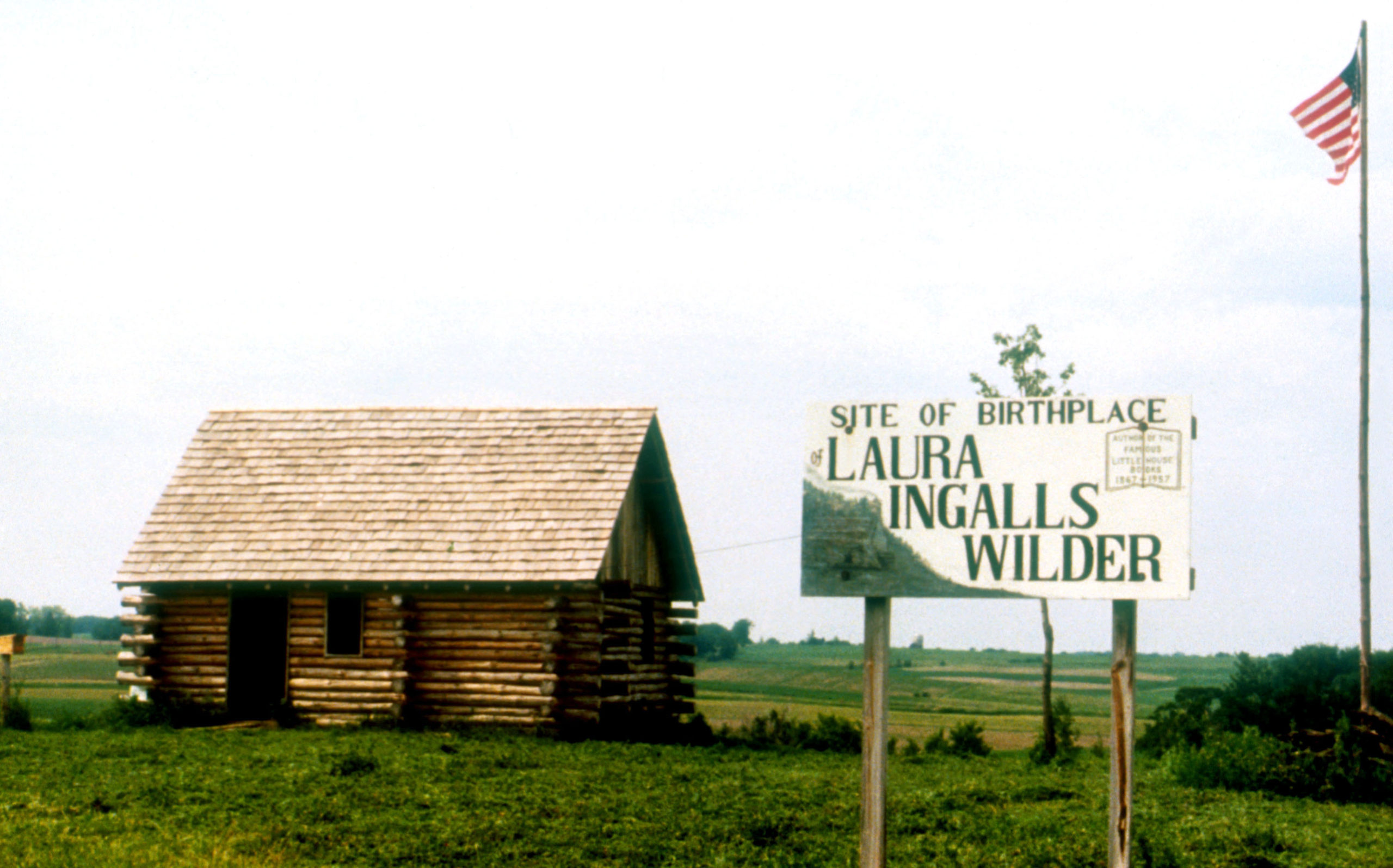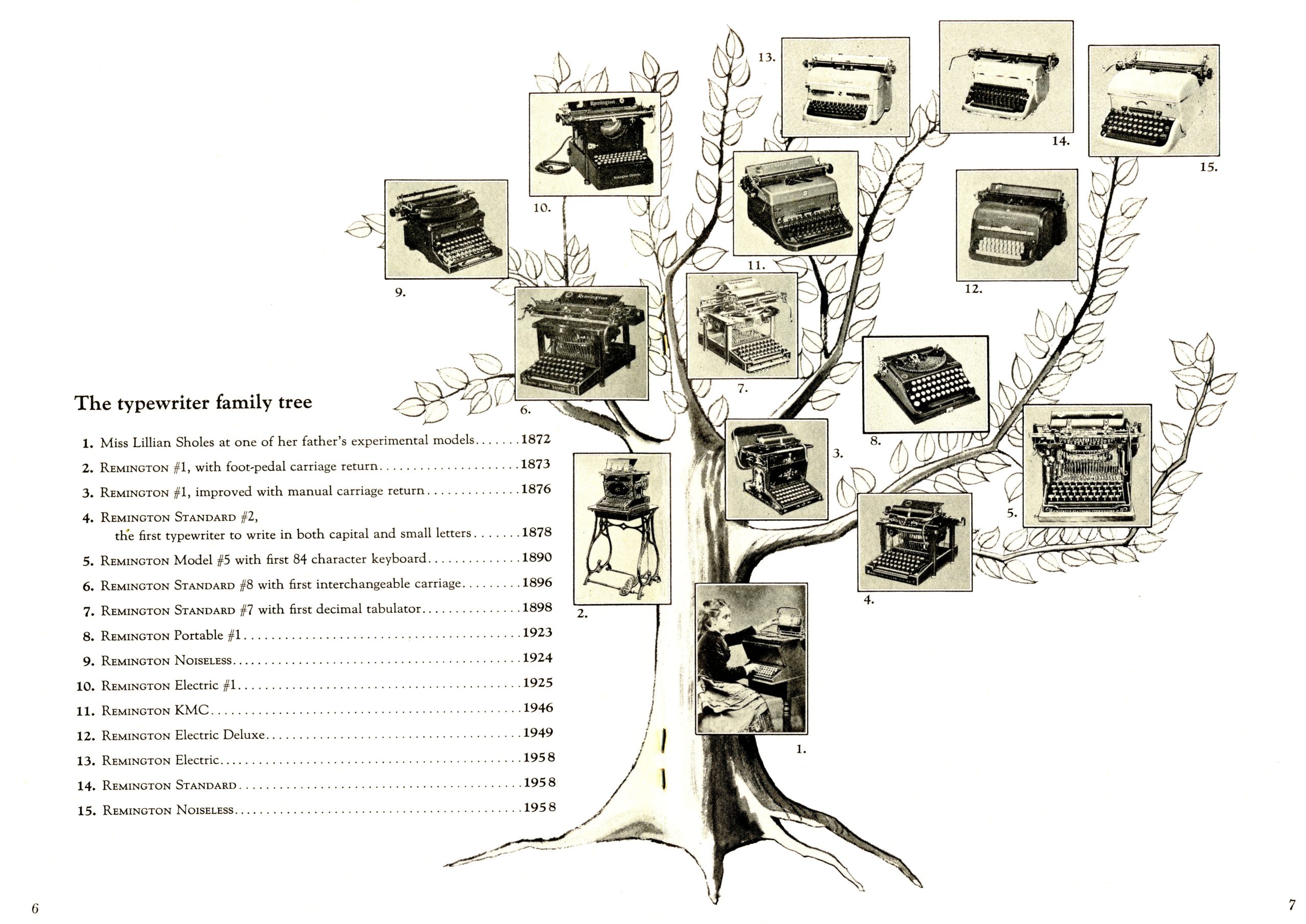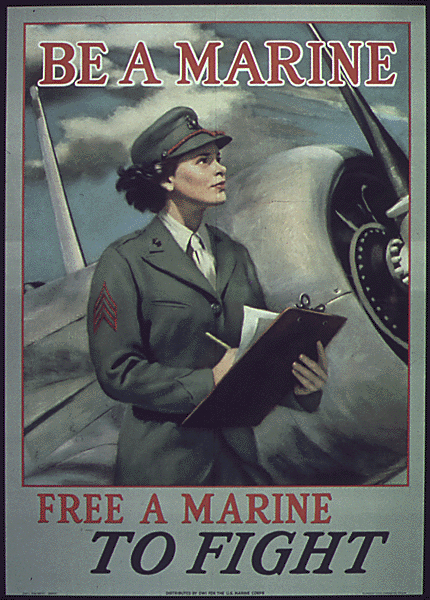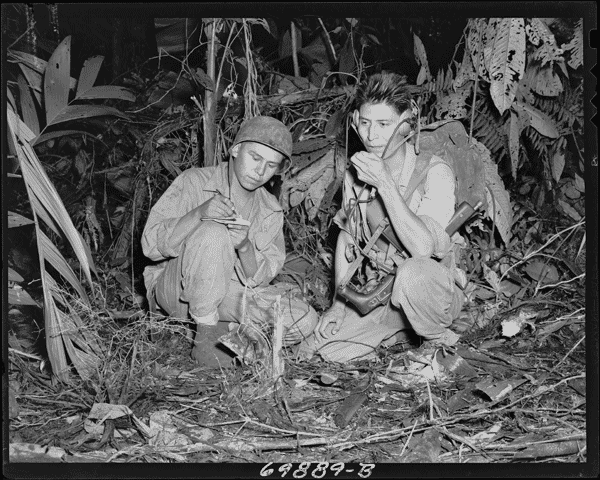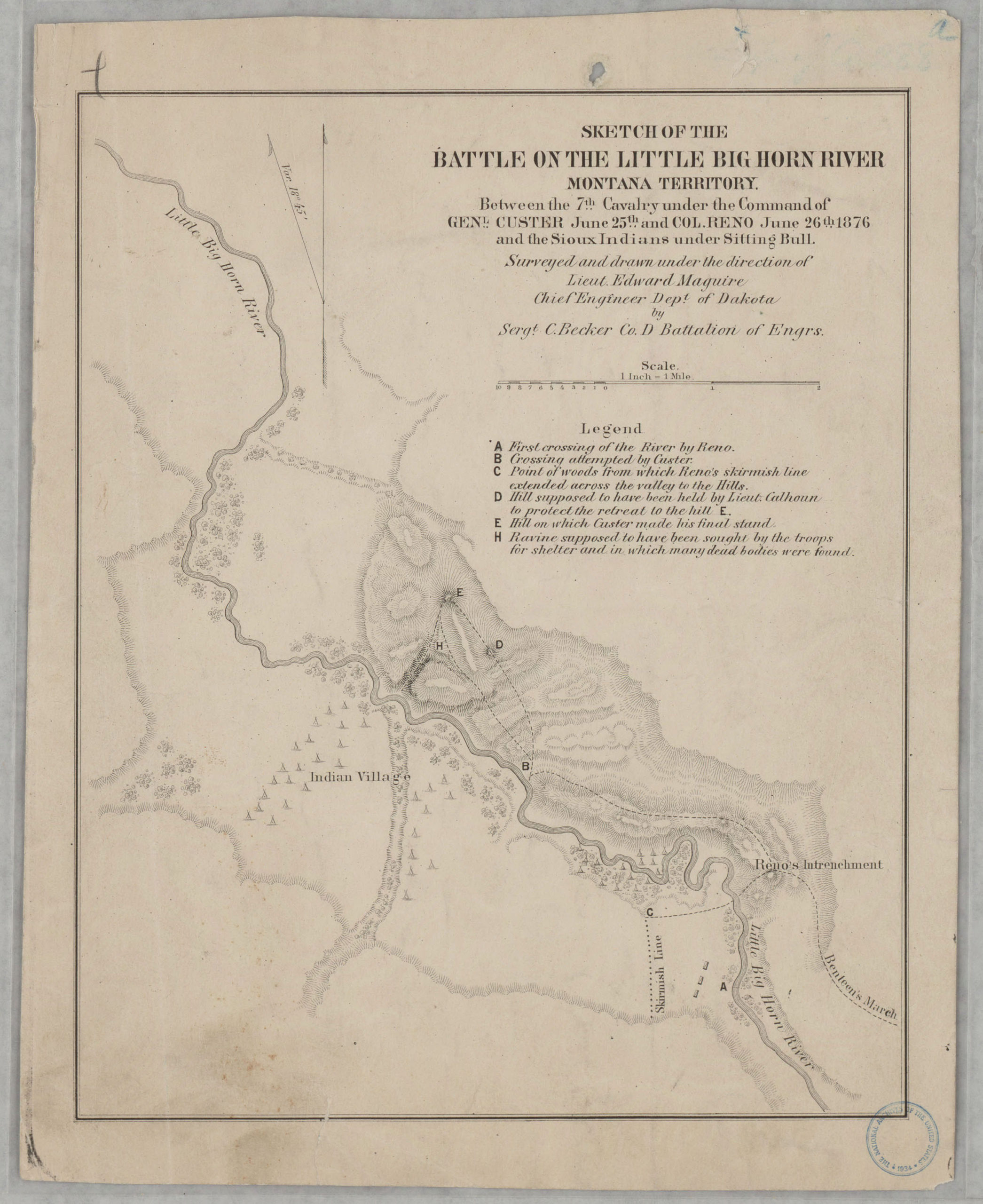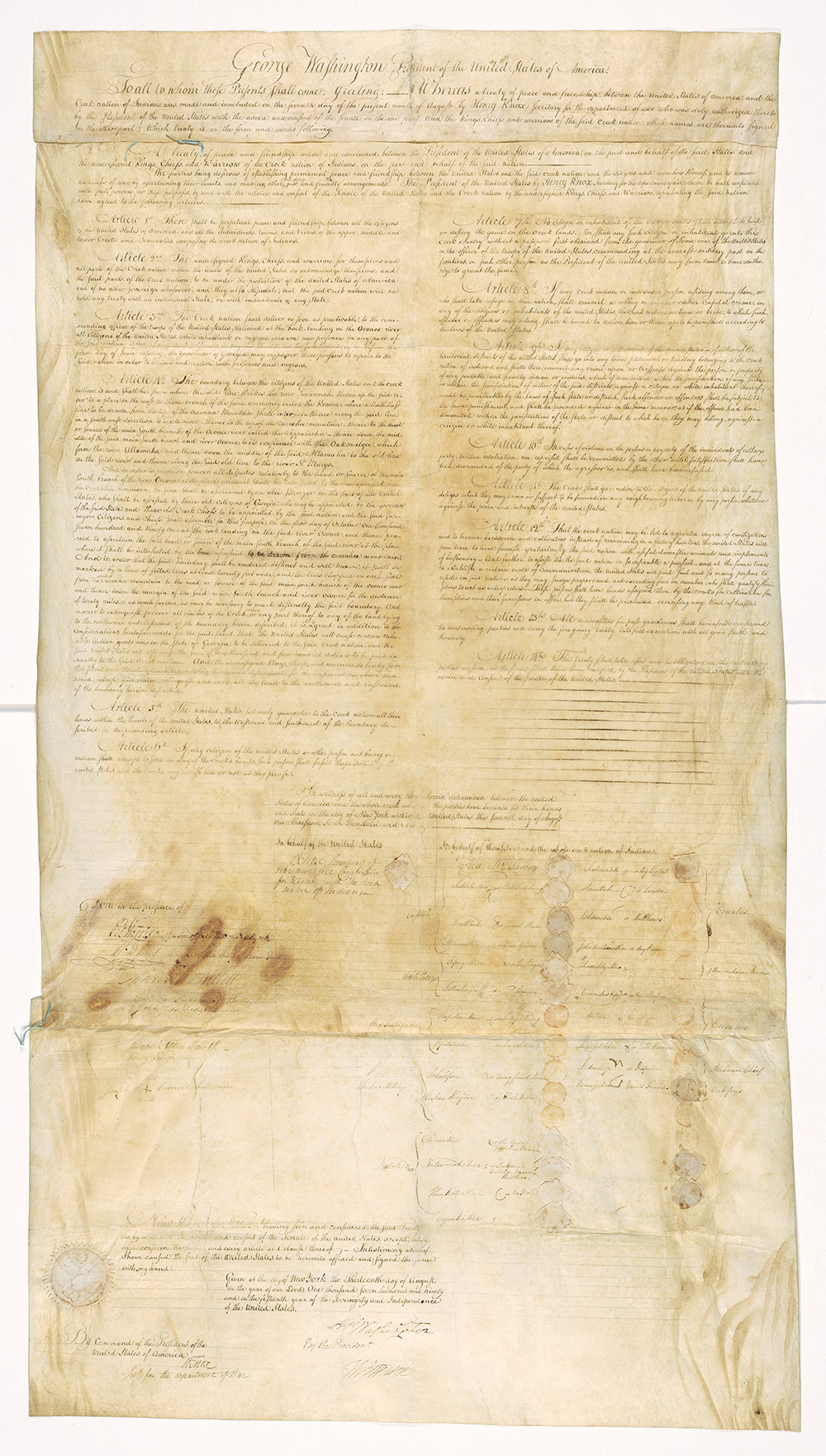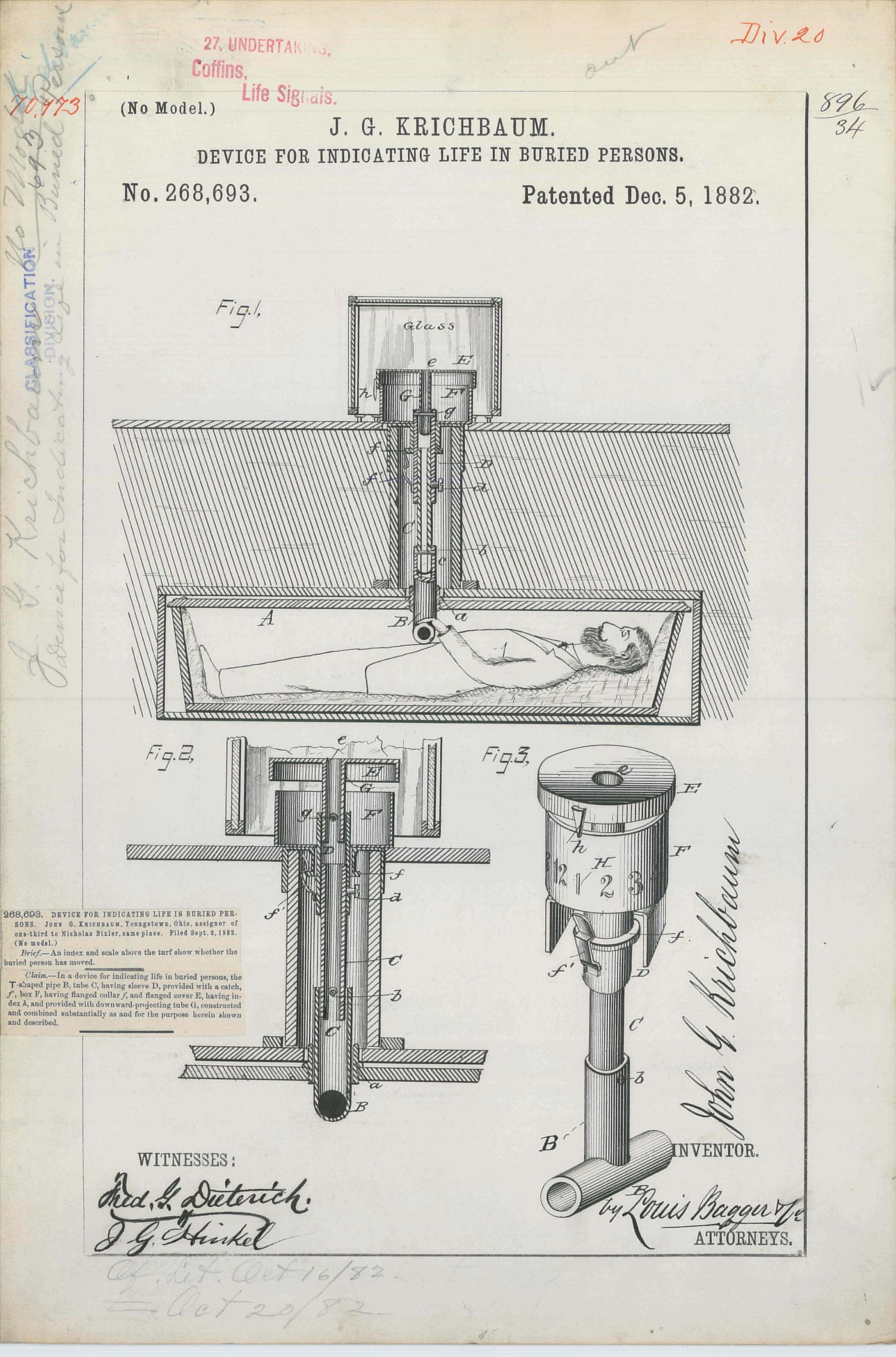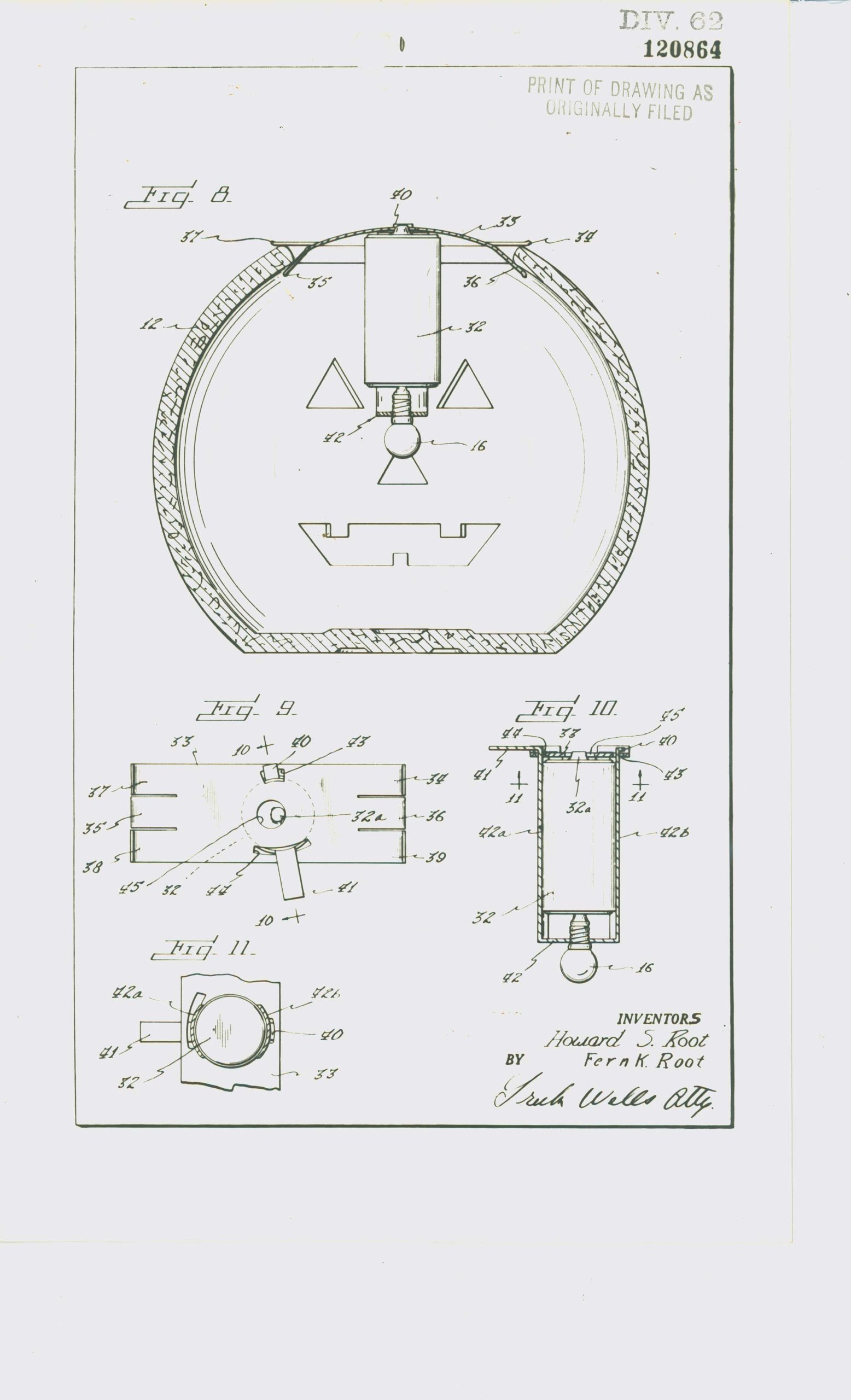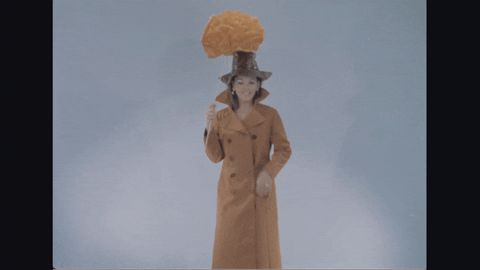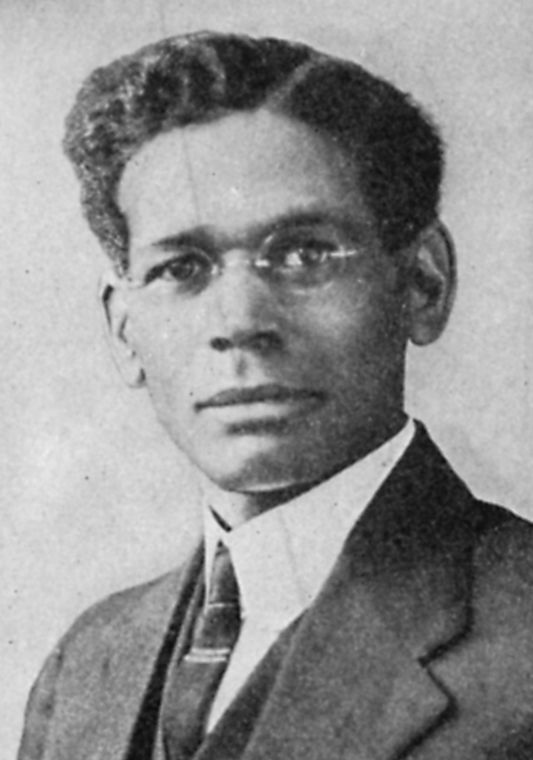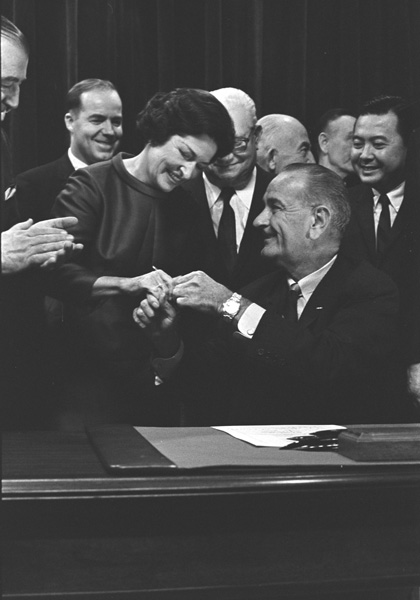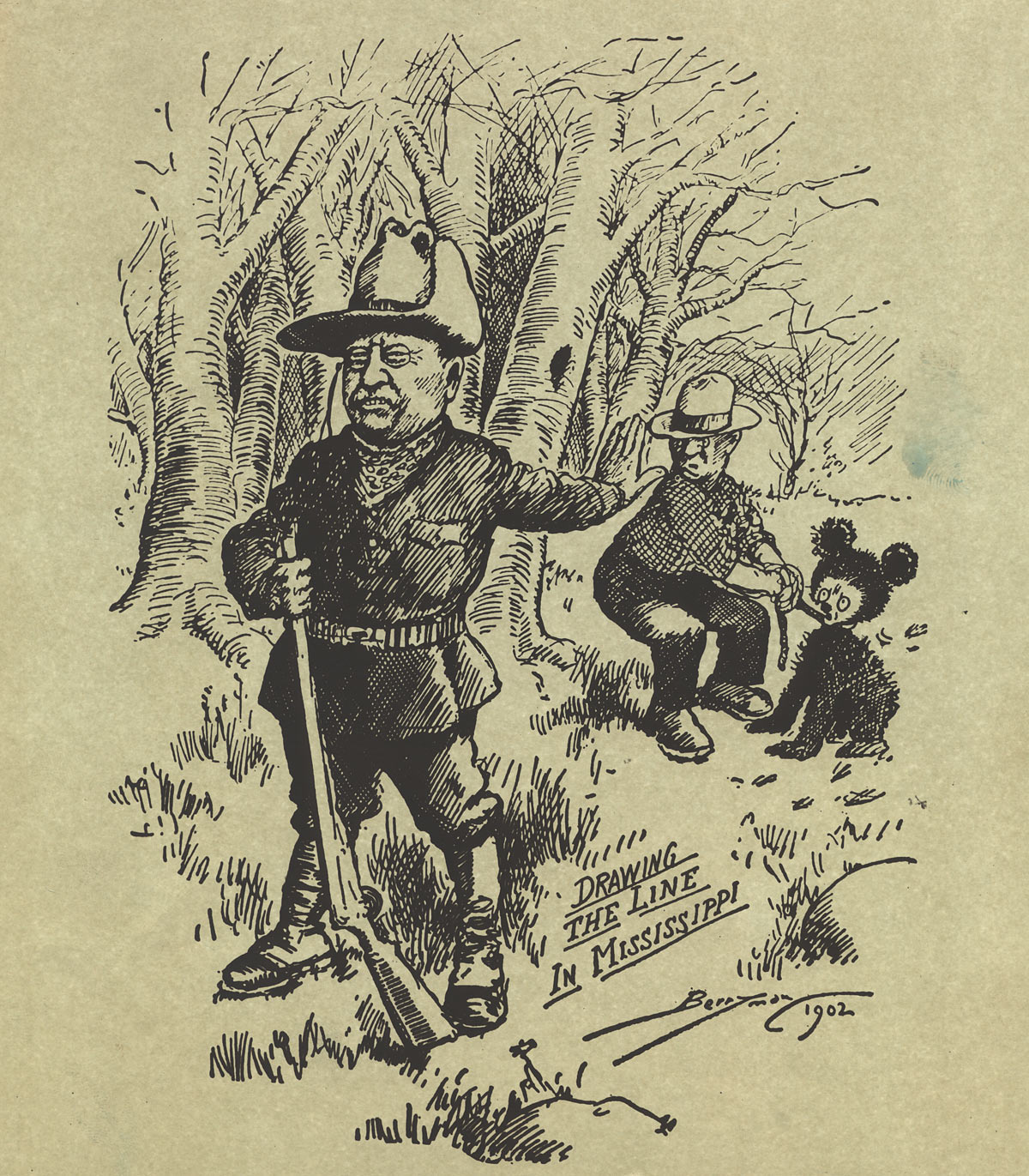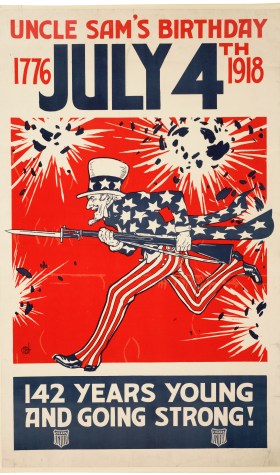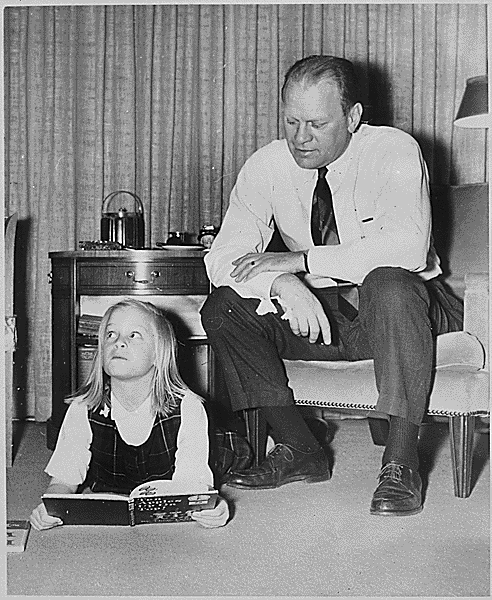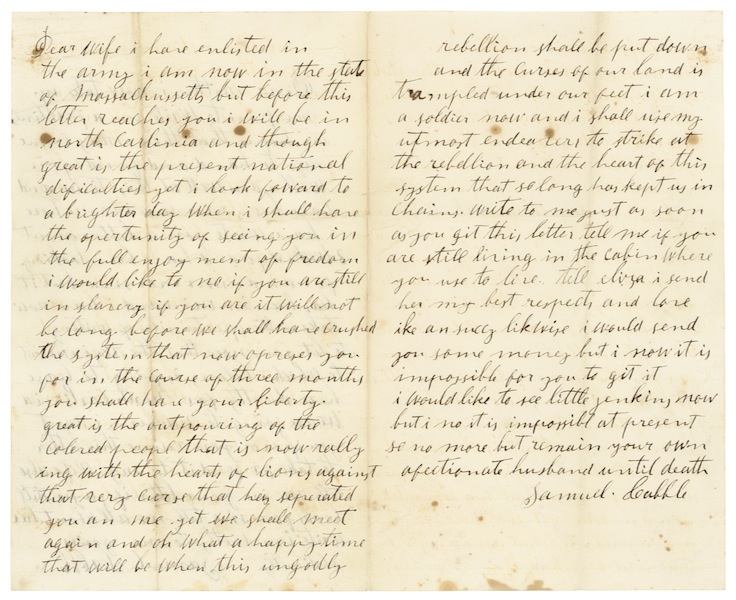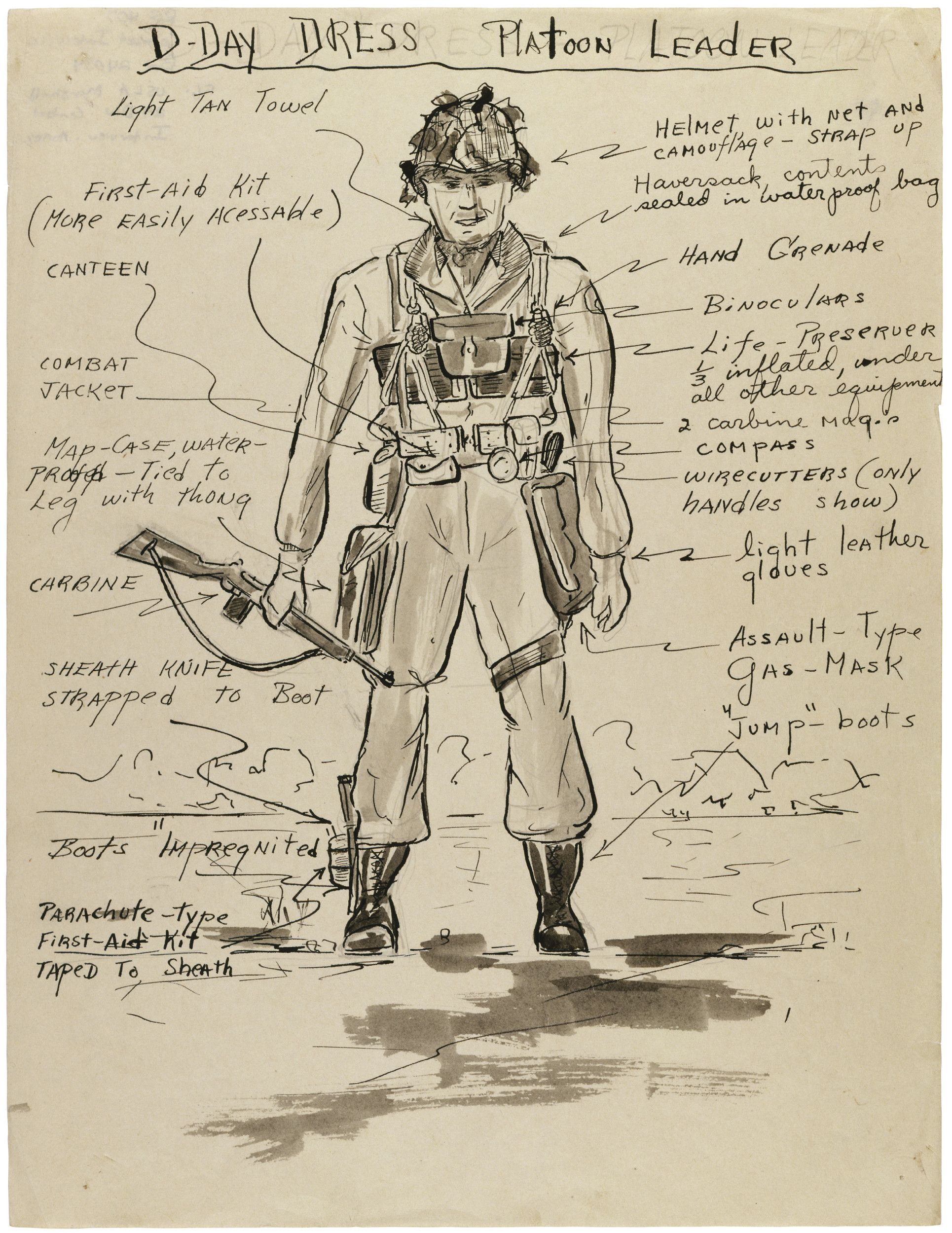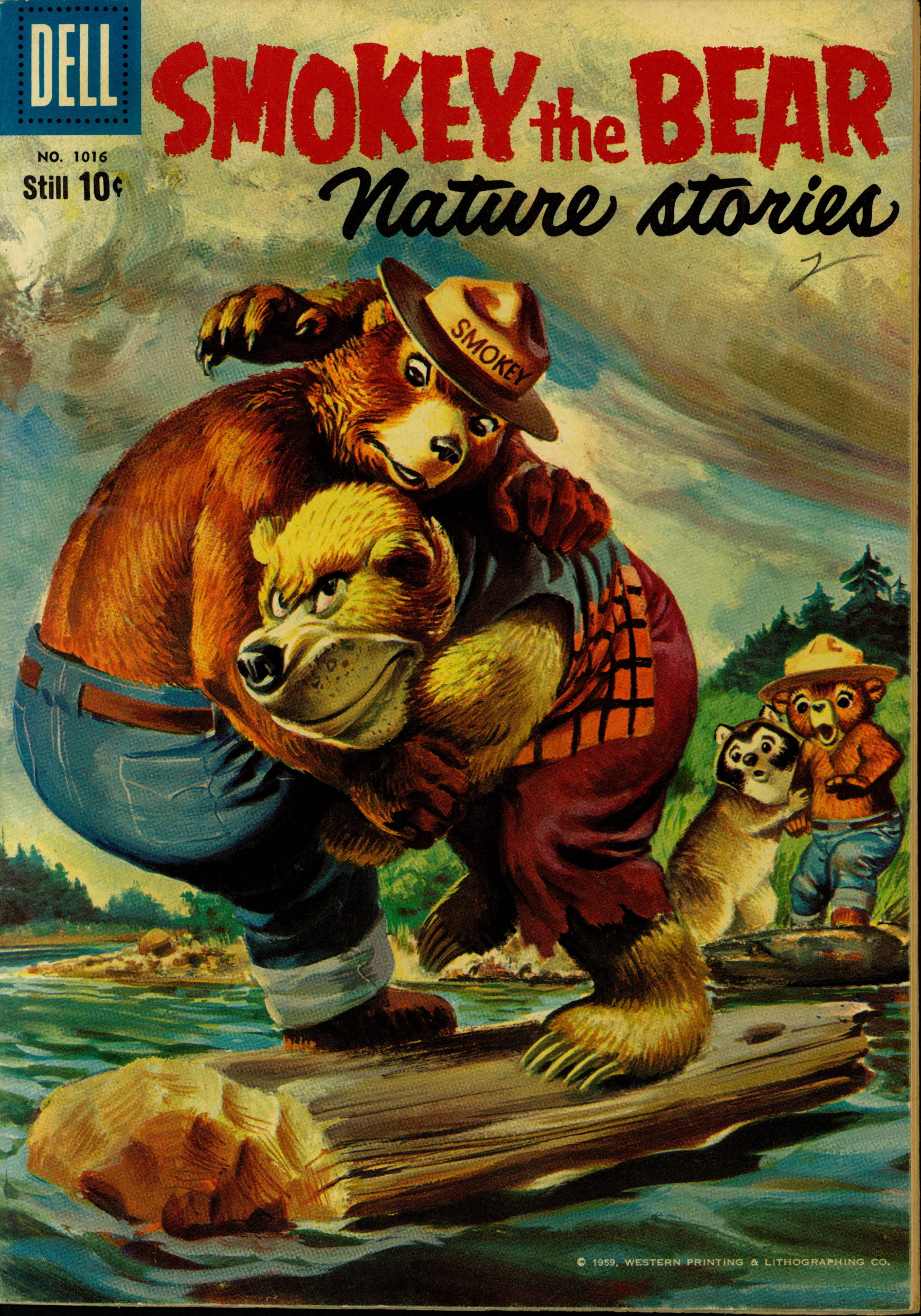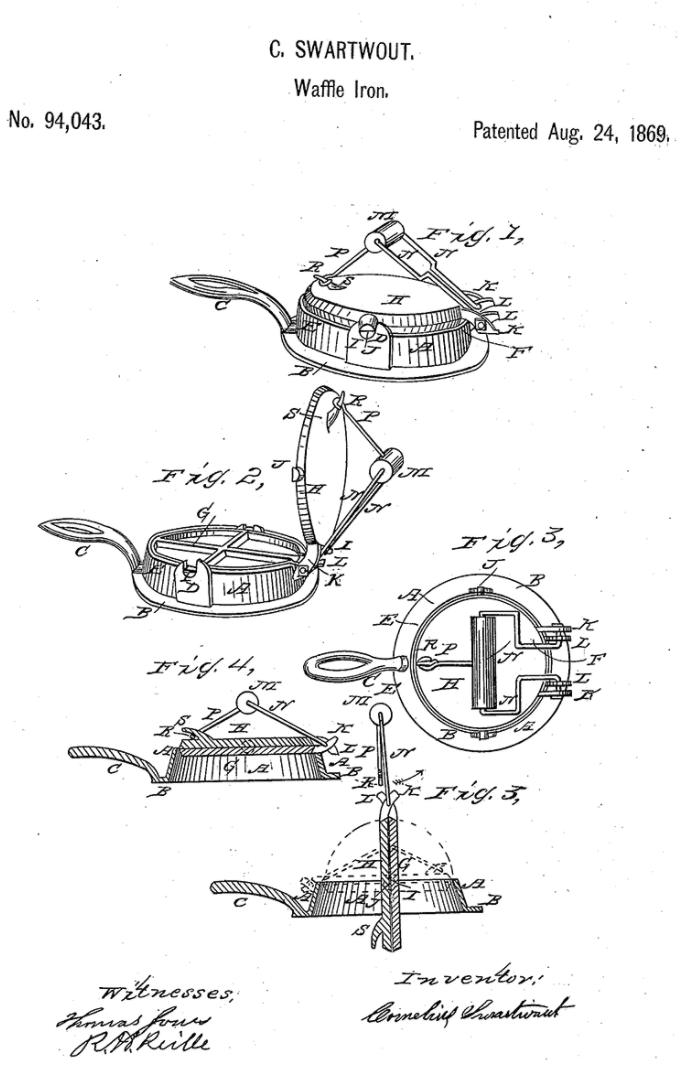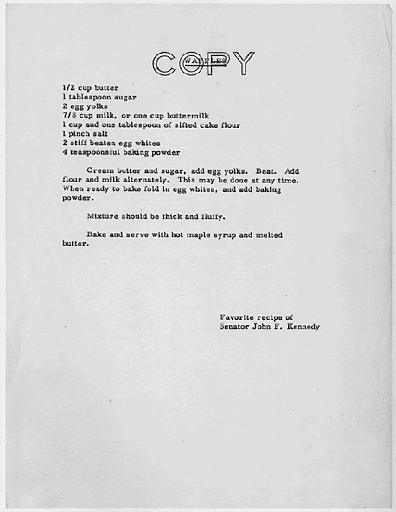History Helpings
A Total Pigsty
Do you hate when your parents tell you to clean your room? What if your room looked like this? Before the National Archives was created, important documents were often stored in less than ideal conditions. And when the new staff moved into the not-quite-completed building in 1935, they immediately realized that they needed more storage space. And when the new staff moved into the not-quite-completed building in 1935, they immediately realized that they needed more storage space. Originally, the building had a courtyard, but the agency set to work right away, filling the courtyard in and more than doubling the storage area from 374,000 square feet to 757,000 square feet.
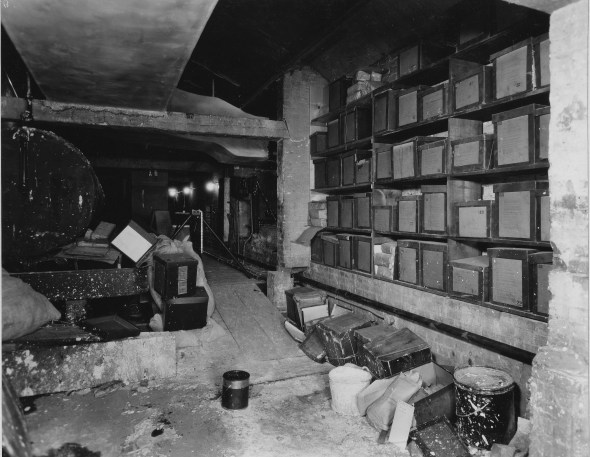
We Love a Parade
Have you ever attended a parade? Did you love the marching bands, the floats, and the grand marshalls and guests of honor riding past you in convertibles?
On December 13, 1952, the Library of Congress and the National Archives organized a parade that did not honor a person—instead, the parade was in honor of the Declaration of Independence and the Constitution of the United States. On that day, the two documents were formally transferred to the National Archives, arriving in an armored personnel carrier escorted by a military honor guard and armed servicemen, where they joined the Bill of Rights.
Where’s Waldo Lincoln
To the disappointment of many: no, there’s not a treasure map on the back of the Declaration of Independence as Benjamin Franklin Gates led us to believe. However, the mural hanging above the Declaration in the National Archives Rotunda does hold a secret for you to uncover.
It turns out, in addition to taking some creative liberty with the clothing of the founding fathers, the artist also included Abraham Lincoln in the mural to demonstrate the connections between America’s early and later history, and to reinforce the National Archives’ mission to preserve and present this history. Can you spot President Lincoln? Hint, keep looking up!
And while you’re trying to crack that code, add some color to the founding fathers themselves and learn each of their names.
Smile Wide
One of the more interesting White House gifts has got to be this electric toothbrush set stamped with the presidential seal. In 1961, electric toothbrushes were all the rage, and President Lyndon B. Johnson kept a stash in the Oval Office to hand out as gifts. Rumor has it he once said, “I want people to think of me right away when they wake up and right before they go to bed.”
GIF Giving
In the spirit of the gift-giving season, the National Archives also likes to celebrate its own season of GIF giving. This 12 Days of GIF-mas thread highlights fun, historic GIFs from the holdings of the National Archives, from one groovy member of the Women’s Army Corps to 12,000 marchers marching.
Perfect Patents
As we get into the swing of December and the holiday season, check out this collection of patents for gift ideas for your loved ones. An 1899 golf club, an 1875 locket or a 1903 bicycle may just be the perfect gift, especially if you try your hand at coloring them in yourself! These black and white patents could use a pop of color.
Little Town in the National Archives
From a Little House on the Prairie, was born a little town in the National Archives. Laura Ingalls Wilder’s collection of eight books about her childhood in a pioneer family in De Smet, Dakota Territory has been popular throughout history. National Archives records can help trace the Ingalls family and the members of the community they lived in.
Much has been written about Wilder’s books and whether her stories accurately reflect what happened. Wilder did not claim to be writing history but rather a story of her life as a little girl and young woman on the frontier. Through federal records, some incidents can be verified, and others can be reinterpreted.
To use the records of the National Archives, you need to know how a person or community could have interacted with the federal government. The federal government distributes public land, prepares annual reports, studies the weather, and opens post offices. (NARA does not, however, keep vital statistics – birth, marriage, and death records.) Using homestead files, annual reports, climatological reports, and post offices records, you can get a broader understanding of the time and place in which a person lived. An examination of the Ingalls and Wilder families in De Smet, shows how these records may be used to fill out a family or community history.
Roots of the Typewriter
Remington Rand produced this informational pamphlet to show consumers the vast knowledge they had of the typewriter industry. Beginning with the older 1872 experimental model at the trunk of the tree and moving up the branches to the newer 1958 models, this typewriter family tree is a great example of how ancestry and lineage can be traced over the years. Take a page out of these typewriters and make your own family tree.
Battlefield to the Oval Office
Over half our leaders of the free world contributed to keeping America safe by serving in the U.S. military. Twenty six Presidents of the United States were soldiers, sailors and airmen before assuming the title of Commander in Chief. From George Washington to Jimmy Carter to Dwight D. Eisenhower, take a look at the unique experiences of some of the nation’s most well-known veterans.
P.S. In addition to his military service, President Eisenhower also loved to paint. Add a splash of color to these photos of the President in uniform.
Marinettes
The Vietnam War marked a very significant time for women in the U.S. It was the first time they were able to join the regular U.S. Marine Corps, rather than the special Marine Corps Women’s Reserve that existed during both World Wars I and II. Women like Opha May Johnson, who joined the military as the first Marinette, were now able to officially be considered part of the Armed Forces and therefore be veterans after completion of their service, blazing a path for other women to follow in their footsteps.
Pictured: A World War II poster recruiting women to join the Marine Corps. (National Archives Identifier 513679).
Stars and Stripes Forever
The American flag is the most prominent symbol of patriotism, and honors all of those individuals who have served our country. John W. Mackenize recognized the importance of properly respecting the flag and patented the invention in 1872 for an improvement in a “flag-hoisting apparatus.”
Unbreakable
Perhaps some of the most significant contributors to the United States’ success during World War II were Navajo Code Talkers. The Marine Corps wanted a way to send encrypted messages that outsiders could not crack, and what better way to do so than to utilize a unique tribal language? Over 400 men from the Navajo Tribe served in places like the Marshall Islands, Sai Pan and Iwo Jima, and their language, which used the Navajo word for “owl” in place of “observation plane,” was never able to be cracked by the Japanese.
Both Sides of the Battle
The Battle of Little Bighorn is one of the best-known battles between Indigenous peoples and the U.S. government. Also referred to as Custer’s Last Stand, the battle is often remembered for the fall of General George Custer, despite the overwhelming victory it turned out to be for the Sioux and Cheyenne tribes. Native Americans, like Crazy Horse, Chief Gaul and Dull Knife led the tribes to victory; but, as was often the case during these times, Native Americans like Curley and Bloody Knife also served on the other side as U.S. Army Scouts under Custer.
Leading Legend
With a name that translates to “Bright Path,” it was no surprise that Wa-Tho-Huk grew up to be known as “The Greatest Athlete of the First Half of the Century.” Jim Thorpe was a part of the Sac and Fox Tribe in Oklahoma and achieved a slew of accomplishments throughout his 65 years of life. From earning gold in the summer Olympics to playing professional baseball to becoming the first president of the Professional Football Association (now the NFL), Thorpe certainly lived up to his Native name.
Making a Promise
The idea of treaties––formal agreements between two people or countries––has existed for quite some time, but it really came into play in America in forming relationships between Indigenous peoples and the U.S. government. Try your hand at making your own treaty. Think about a friend or family member you’d like to make a formal agreement with and use this template to write down your key points and promises. Don’t forget to have both parties sign it when it is finished!
Ah, Ah, Ah, Ah, Stayin’ Alive
Apparently, people have really feared being buried alive throughout history. This 1882 coffin patent has a mechanism to indicate movement and get air to those who might have been buried alive…or to mummies––we hear they need fresh air too!
A Bright Smile
It seems that a small (real or fake) votive candle is the preferred lighting apparatus nowadays for those famous jack-o-lanterns that everyone has come to love. But in 1949, inventors Howard and Fern Root decided that a small lightbulb mechanism would be the way to go.
Costume Contest Winner
Last week, we asked you to vote on your favorite Halloween costume worn by a Presidential Pet. The winner is…India Bush!

America’s Greatest Party
In 2000, the American Forces Information Service went the extra mile with this advertisement, which encouraged voters to request an absentee ballot if they were unable to make it to the polls on election day. We just wish there were actually balloons and confetti at the polls––but at least there are “I Voted” stickers!
Best Campaign Manager Ever
It’s never too early to learn about voting and elections. In 1960, a sixth grade class in Oregon conducted an exercise in which they drew straws to see who would win the 1960 election (Nixon won by a landslide). But after the straws were drawn, the class decided to hold their own Presidential election, and young Walter J. Apley, Jr., was chosen to be campaign manager for candidate John F. Kennedy. After a nail-biting classroom campaign in which the class elected Kennedy, Apley, Jr., wrote the future president to personally deliver the good news. We’re not saying that’s what won Kennedy the actual election, but maybe that bit of twelve-year-old encouragement is just what he needed.
Vote Early Day 2020
You might not be old enough to vote, but it’s never too early to start making sure your voice is heard in our democracy. Tomorrow is Vote Early Day 2020 and you can get involved by helping your older friends and family members make a plan to vote. Visit www.voteearlyday.org.
Vote Early Day is a movement of nonprofits, businesses, election administrators, and creatives working to ensure that all Americans know their options to vote early.
Not a Scrap Left
While many men were serving in World War I, a shortage of farmworkers made the fall harvest difficult. To help meet this challenge, young patriots were asked to save the wheat for soldiers and to not eat extra snacks between meals. The U.S. Food Administration even published this Little American’s Promise for kids to sign and pledge their contribution, something we bet parents wish existed today so that kids would have to clean their plates!
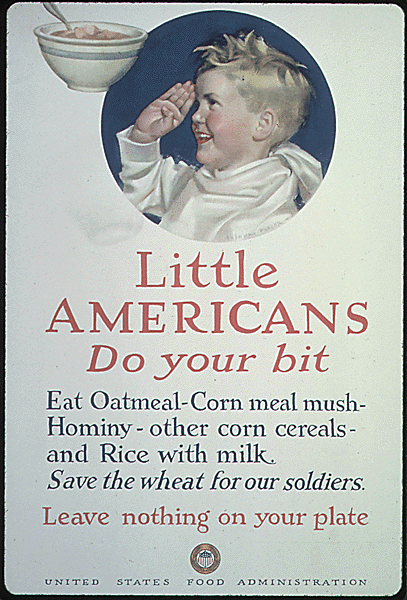
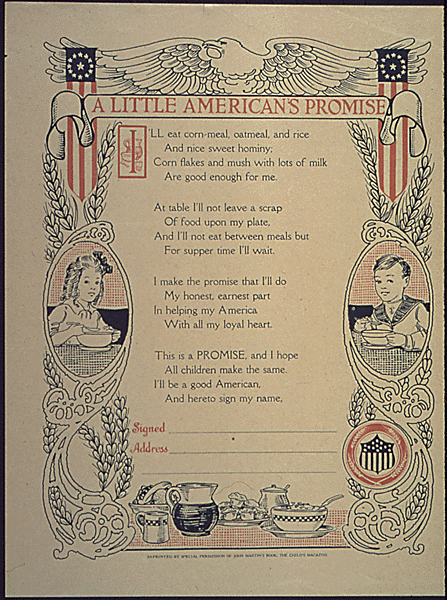
The People’s Grounds
The White House is a beautiful sight, especially when its 18 acres are surrounded by fall’s colorful hues. First Lady Betty Ford opened up the property for one October weekend in 1974 so visitors could see the changing leaves and seasonal flowers for themselves. After all, it is the people’s house!


Rooting for You
Imagine working on a farm during fall harvest and having to cut each individual stalk of corn by hand––what a nightmare! Thankfully, technology has eased some of the burden on agricultural workers during one of the busiest times of year, like this corn cutter patented in 1871.
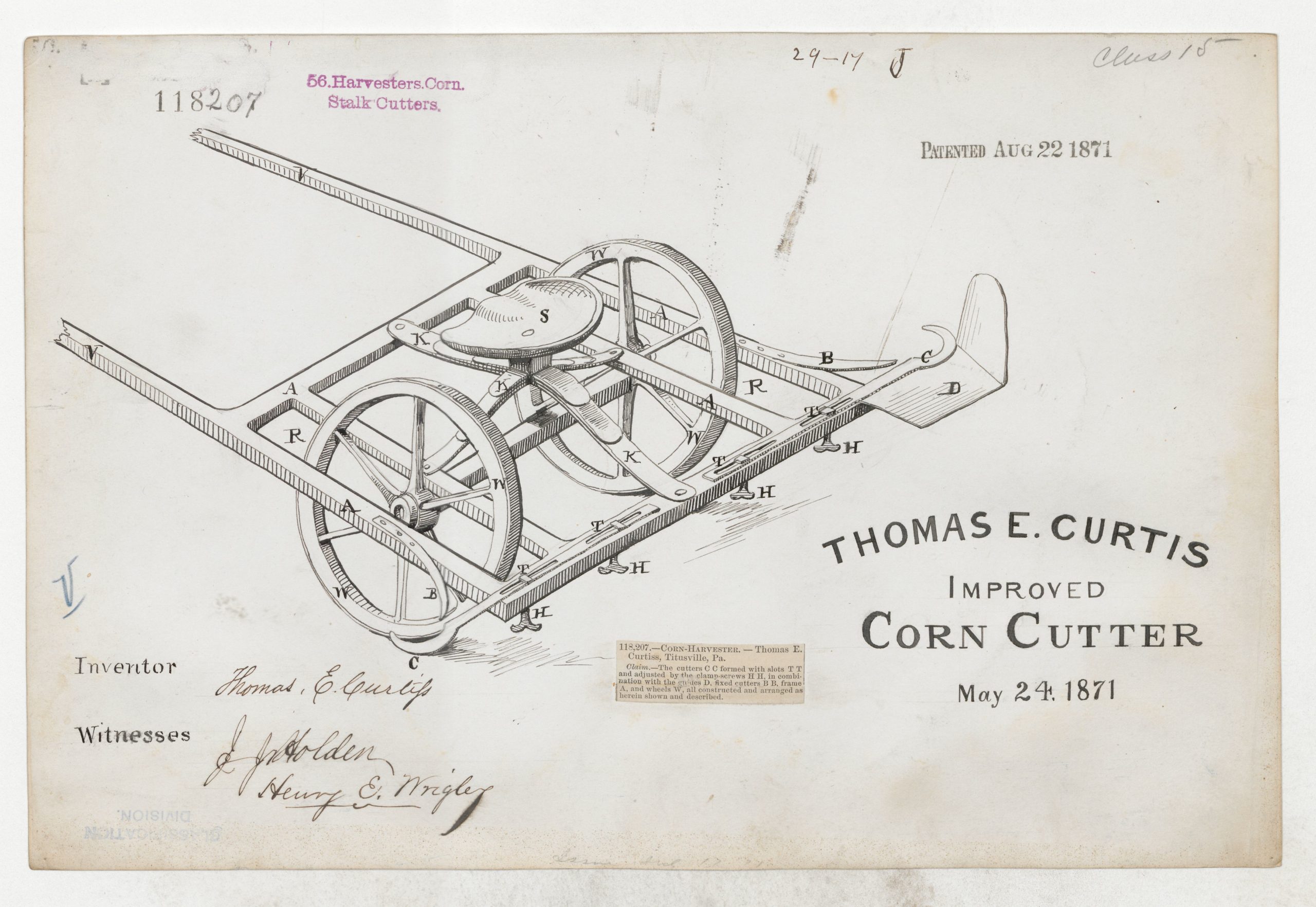
Brotherhood
Nine-year-old J. Jagliarin took a stand when he wrote to President Harry S. Truman in 1948. He had heard about an instance when a group of children were not allowed into a Washington, D.C. hotel because some of them were black. “I am proud to be an American but this makes me feel ashamed,” he wrote. 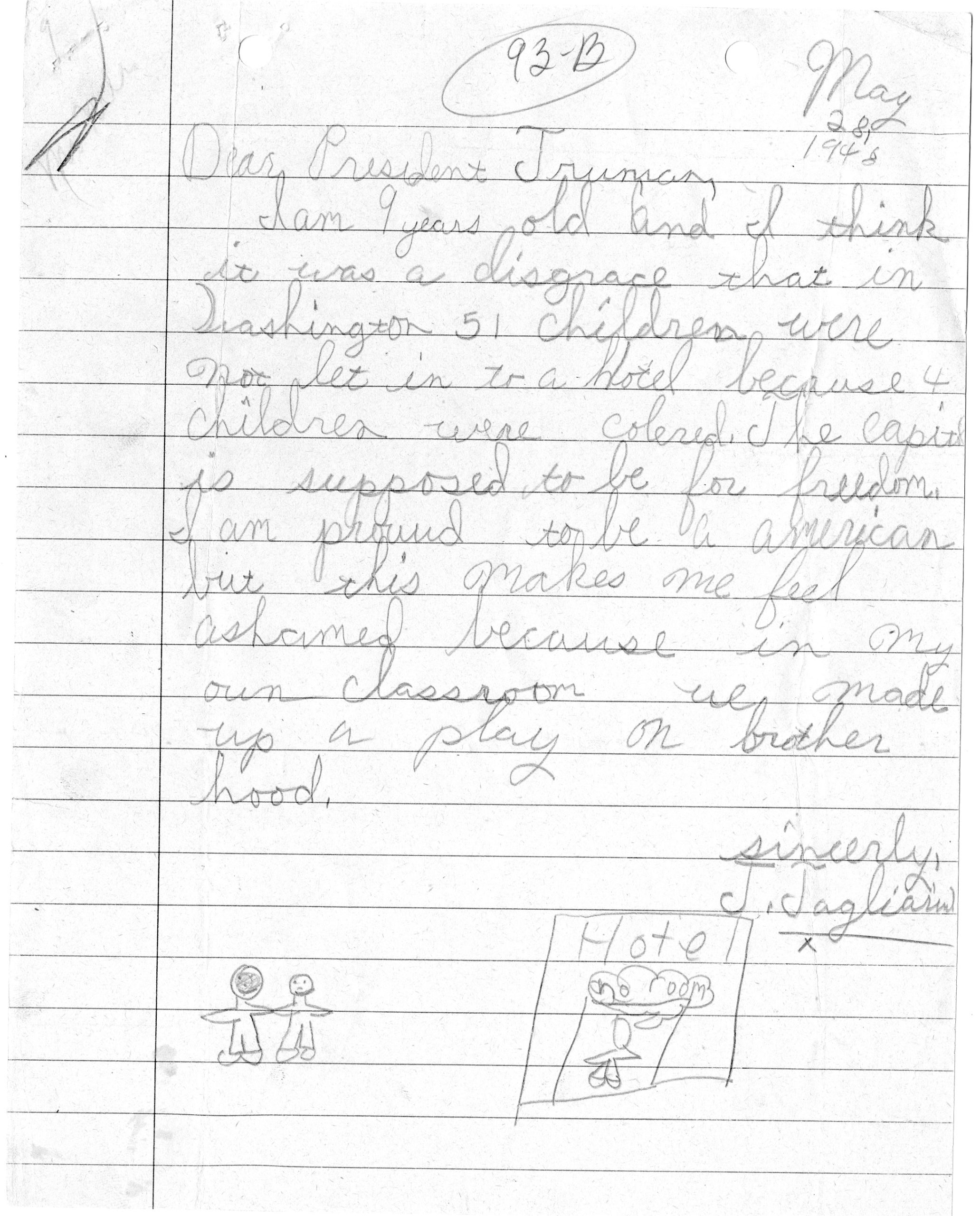
What the Puzzle Reveals
Discover what centuries-old U.S. Navy logbooks in the National Archives are telling climate scientists about our past and how the Earth’s climate is evolving over time
The Navy’s Own Free Willy
Forget about those cute Coast Guard pooches; how about fetch-playing Navy whales?! In 1969, the U.S. Navy’s Project Deep Ops focused on training orca whales Ahab and Ishmael and pilot whales Pip and Morgan to help them retrieve dropped supplies from 3,000 feet below the sea’s surface. The whales were a successful part of the project and might have even aided in oceanographic weather reports.
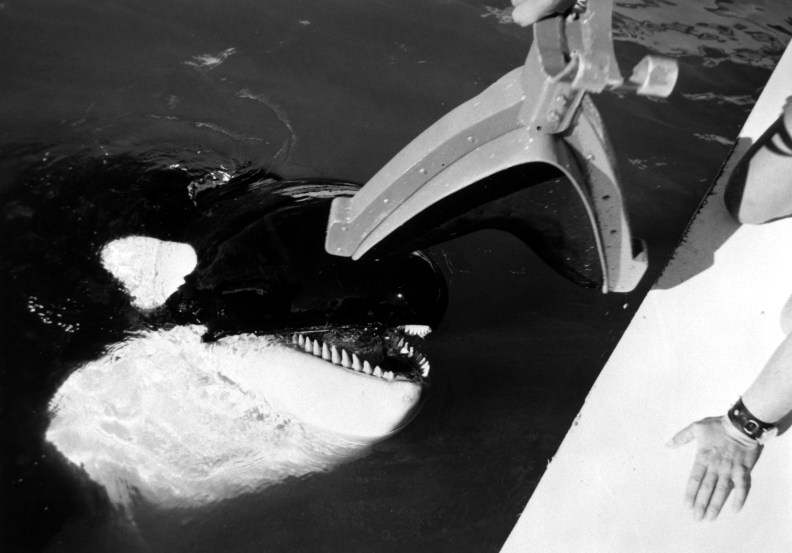
Old Ironsides
This sketch of the old beaut, the U.S.S. Constitution, depicts her in all her glory after her famous War of 1812 battle. But the old gal doesn’t just live on through the numerous Navy deck log records in the National Archives holdings. She continues to retain the title of the world’s oldest commissioned ship that’s still afloat. Check out the Archivist of the United States’ last visit to the wooden-hulled, three-masted frigate-turned-museum ship.

Today’s Weather Report
As we move into the first weekend of October, fall is in the air, and as citizen scientists, we are forecasting sunny skies with temperatures to be fair and favorable. In this quick report, we used six of these common weather terms; test your seas of knowledge and see how many more you can find in this word search.
The Seas of Knowledge Digitization project is supported by the Digitizing Hidden Collections grant from the Council on Library and Information Resources (CLIR). The grant program is made possible by funding from the Andrew W. Mellon Foundation.
The Medicine Ball Cabinet
One of the greatest true American sports games unfortunately didn’t make it to the pros, but at least made it to 1600 Pennsylvania Avenue. President Herbert Hoover and his physician invented the game “Hoover-Ball,” a combination of tennis, volleyball, and medicine ball, to stay fit and active every day. Hoover and his Medicine Ball Cabinet played the game at the White House every single morning of his presidency (except for Sundays) from 7:00 to 7:30 AM.
Take a look at these tips to see 10 ways to stay active. President Hoover used Hoover-Ball as part of tip #4. Which tip will you use to get your heart pumping like a President?
Buy Me Some Peanuts & Cracker Jacks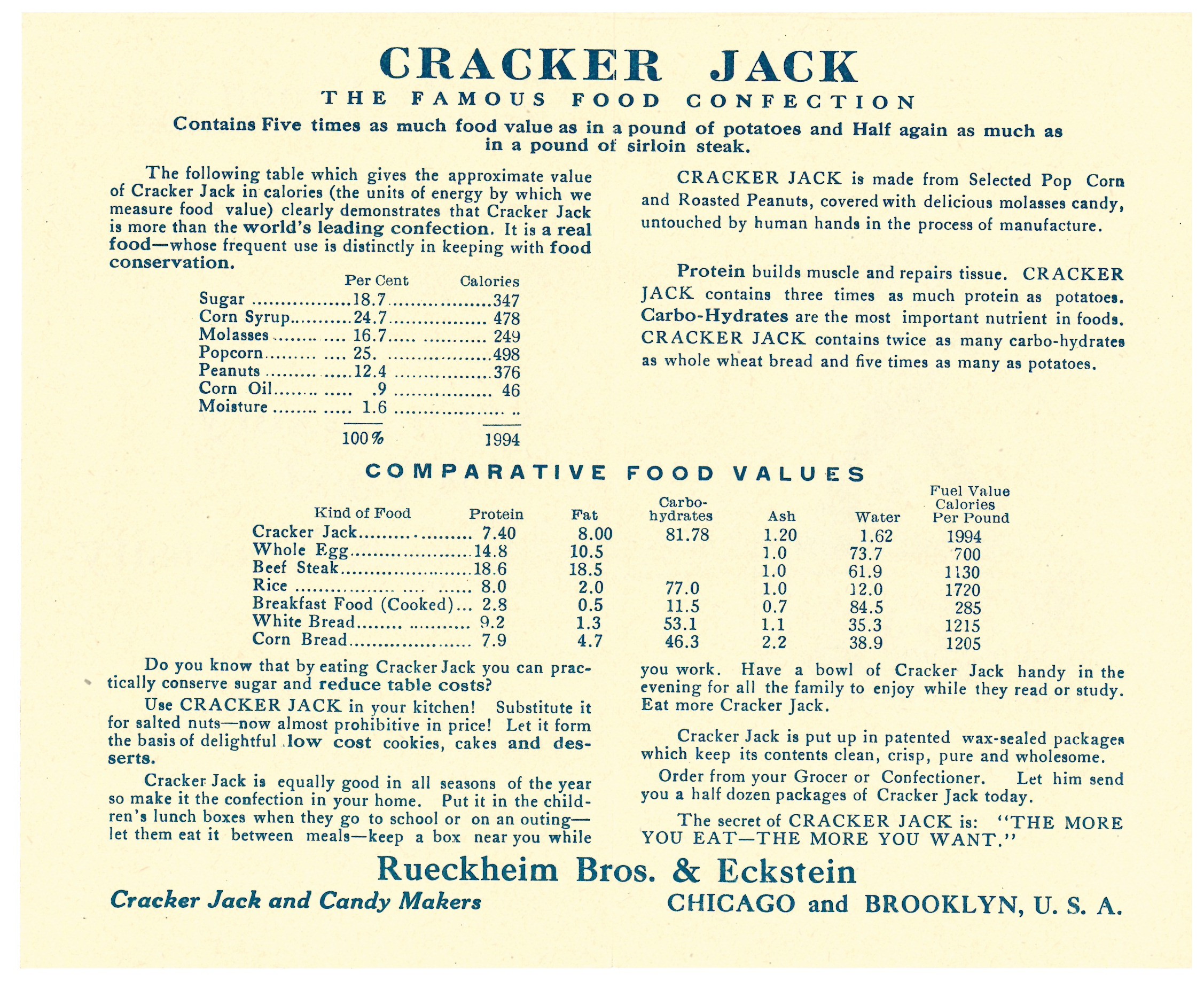
Not only is Cracker Jack a famous staple at baseball games, but apparently you can tell mom it’s also a nutritious snack. This 1918 Real Food Value pamphlet describes the nutritional value of the molasses-flavored, caramel-coated peanuts and popcorn combo. According to the pamphlet, it’s “a real food – whose frequent use is distinctly in keeping with food conservation” with three times as much protein and two times as many carbohydrates as potatoes. No promises it will get you out of eating your broccoli… but it’s worth a try!
Ready for Some Football?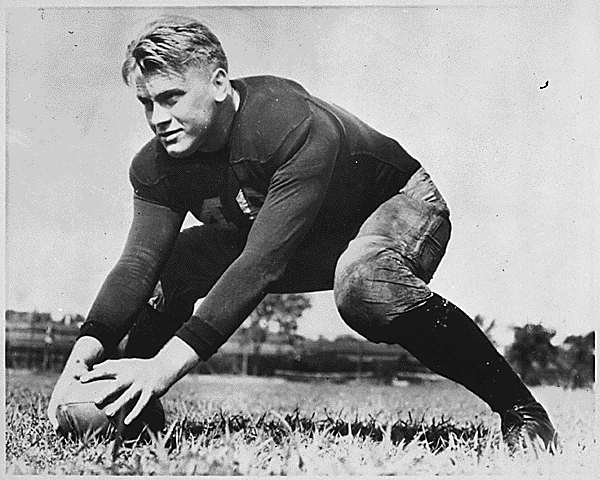
President Gerald Ford could have been pro-footballer Jerry Ford, but he gave up a life on the field for a life in the White House. After impressing recruiters during his time at the University of Michigan, Ford received offers from both the Green Bay Packers and the Detroit Lions. Imagine how different his life would have been if he chose the pigskin kind of football over the nuclear briefcase kind!
Step Up to the Plate
The more things change, the more they stay the same. Our national pastime has changed over the years––and this year’s season is no exception. As you prepare for the fall classic, we challenge you to compare and contrast today’s “horsehide sphere” to this clip of a 1933 World Series game.
Voice of an Angel
Parents tend to be their children’s biggest cheerleaders for whatever they do, whether that be acting, playing sports, or even singing. This mentality was no different for a very proud President of the United States when Margaret Truman sang at Constitution Hall one evening. After a Washington Post music critic published a scathing review of her performance, President Harry Truman responded.
What the music critic said:
Miss Truman is a unique American phenomenon with a pleasant voice of little size and fair quality – (she) cannot sing very well – is flat a good deal of the time-more last night than at any time we have heard her in past years – has not improved in the years we have heard her – (and) still cannot sing with anything approaching professional finish.
President Truman’s response:
Mr. Hume:
I’ve just read your lousy review of Margaret’s concert. I’ve come to the conclusion that you are an “eight ulcer man on four ulcer pay.”
It seems to me that you are a frustrated old man who wishes he could have been successful. When you write such poppy-cock as was in the back section of the paper you work for it shows conclusively that you’re off the beam and at least four of your ulcers are at work.
Some day I hope to meet you. When that happens you’ll need a new nose, a lot of beefsteak for black eyes, and perhaps a supporter below!
Pegler, a gutter snipe, is a gentleman alongside you. I hope you’ll accept that statement as a worse insult than a reflection on your ancestry.
H.S.T.
9/11 Remembrance at Salt Lake City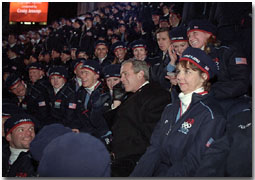
As part of the opening to the Olympic Games in Salt Lake City, Port Authority Police Officers and members of the NYPD carried an American flag that flew in front of the World Trade Center on 9/11. On a stage where so many different countries and cultures are represented, President George W. Bush said of athletes at the time, “It’s a chance for the world to see that in times of war, we can come together in friendly competition to promote the peace. So not only you represent the greatest nation on the face of the earth, you represent a spirit that is much bigger than evil and terror: you represent peace.”
Working 9 to 5
Prior to holding the job title of President of the United States, these men contributed to the labor force in some unique ways. Harry Truman was both a mail clerk for 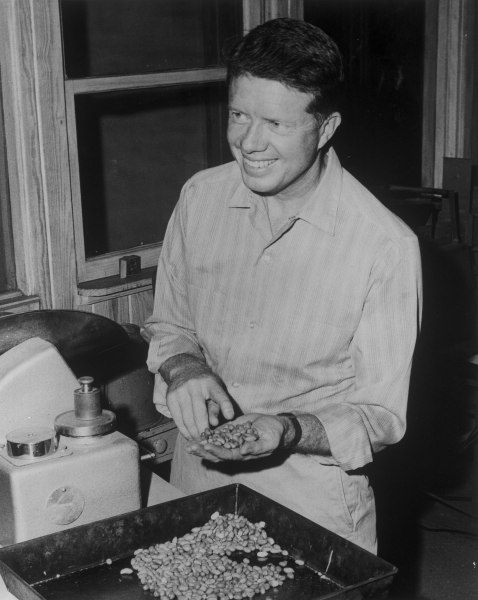 the Kansas City Star and a timekeeper on a railroad construction project. Before their Oval Office debuts, Jimmy Carter was a peanut farmer and Dwight Eisenhower spent two years slingin’ scoops at Belle Springs Creamery. It goes to show that no job is too big or too small!
the Kansas City Star and a timekeeper on a railroad construction project. Before their Oval Office debuts, Jimmy Carter was a peanut farmer and Dwight Eisenhower spent two years slingin’ scoops at Belle Springs Creamery. It goes to show that no job is too big or too small!
Inequality in the Workforce
An important part of labor rights and reform throughout history has been calling attention to the inequalities of the workforce and allowing workers to take to the streets and highlight the challenges they face. Among these labor rights crusaders was Dr. George Edmund Haynes, who illuminated racial inequalities in the United States workforce in the 1920s.

When I Grow Up…
Not sure what you want to be when you grow up? We’ve all been there! Luckily, the U.S. Bureau of Labor Statistics offers some fun ways to consider different careers. Try this crossword puzzle or word search to discover some new occupations.
A Courageous Voice
Through her words and actions in the suffrage movement, Ida B. Wells was an outspoken activist in the fight that African American women undertook for women’s rights. From her letters to government officials to her defiance of segregation orders at a march, she paved the way for many to follow in her footsteps. You can catch her speaking about her experiences in yesterday’s program.
The Movement as a Mosaic
Suffragist Alice Paul spoke about the women’s rights movement like a mosaic––“each of us puts in one little stone, and then you get a great mosaic at the end.” This serves as a great reminder that no matter how small the action, it can make a big difference. Hear directly from a few pieces of that mosaic during our family program with Susan B. Anthony, Alice Paul and Sojourner Truth earlier this week.
A More Beautiful America
When Claudia Alta was born in 1912 and a nursemaid mentioned she looked “as pretty as a lady bird,” no one knew that she would be known by that nickname throughout her life. Lady Bird Johnson took that name and ran with it, as she did with her passion for nature and environmentalism. Acting as a “shadow Secretary of the Interior,” Lady Bird dedicated her time as First Lady to creating a more beautiful America for generations to come.
Mrs. Bush’s Story Time
“Millie’s Book: As Dictated to Barbara Bush” and Mrs. Bush’s Story Time are just two of the platforms Barbara Bush used to promote literacy during her lifetime. How interesting it must have been to write a story through the eyes of the White House dog! Believing that “if more people could read or write, we could be much closer to solving so many other problems that our country faces,” Mrs. Bush worked tirelessly to promote reading programs for both children and adults.
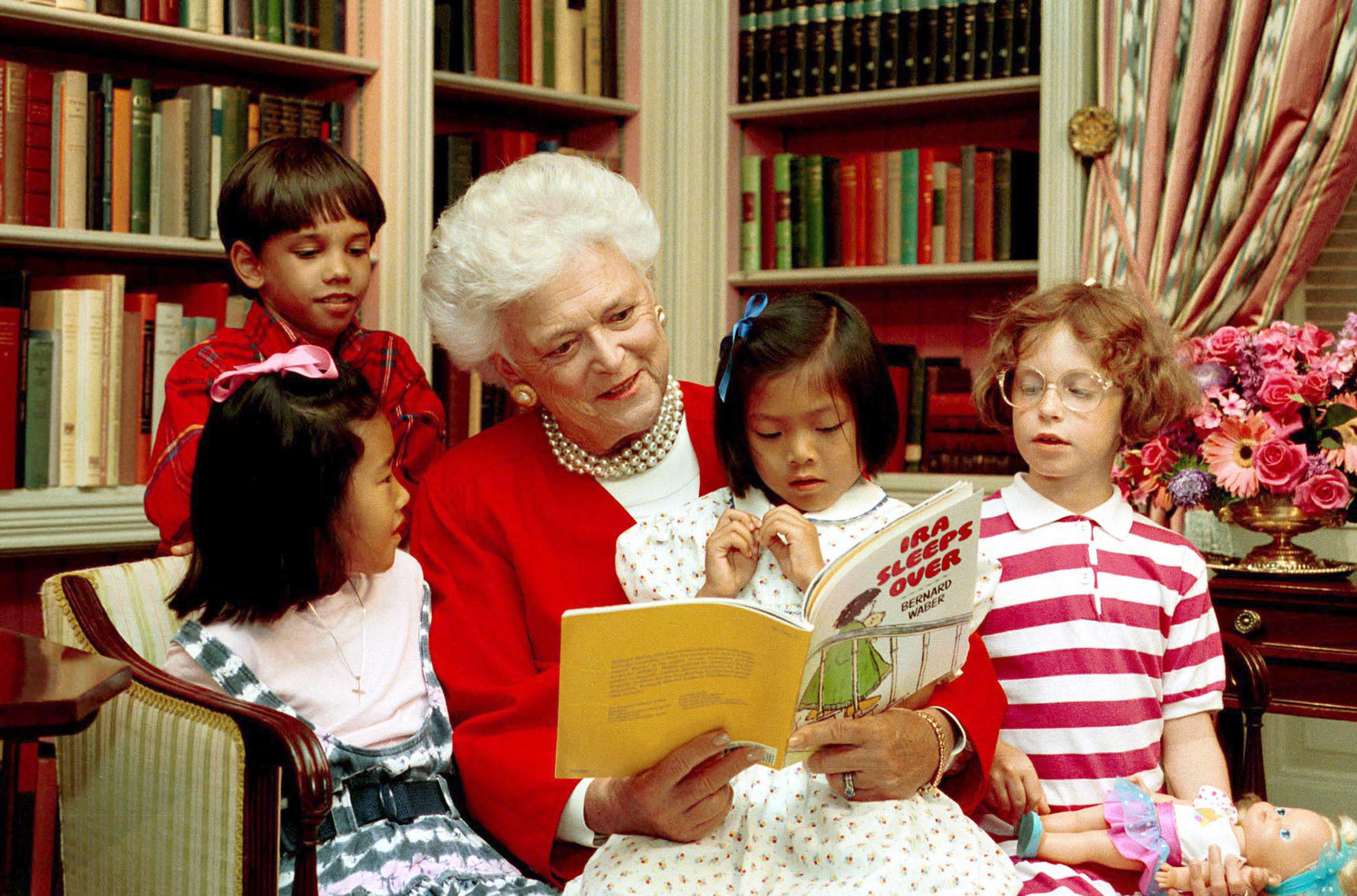
Let’s Move!
As fall approaches and the temperatures start to cool down, we know we’ll be flocking to the outdoors for some sunshine and physical activity. As First Lady, Michelle Obama recognized this need and acted to combat childhood obesity through the Let’s Move program. By emphasizing the need for physical exercise and healthier food options for school lunch programs, she certainly was active and busy during her time in the White House, even planting a vegetable garden on the grounds.
A Sign You Believe In
In preparation for our big anniversary commemoration next week, please take some time to reflect on signs the suffragists made 100 years ago as they argued for the right to vote. Then, whip out your sharpies and make your own sign about an issue you care about in your community. P.S.––in case you need some inspiration, we’ve got you covered with these suffragist signs from the Archives holdings.


Scooping up the Fun
After this long, hot summer, we can attest that we’ve more than eaten our way through a pint or two of delicious ice cream. We should probably take the lead in a heroic sacrifice from this boy and his pup in this World War I poster and swear to eat no more ice cream – but we just can’t resist, especially after seeing these historic ice cream records from our holdings.
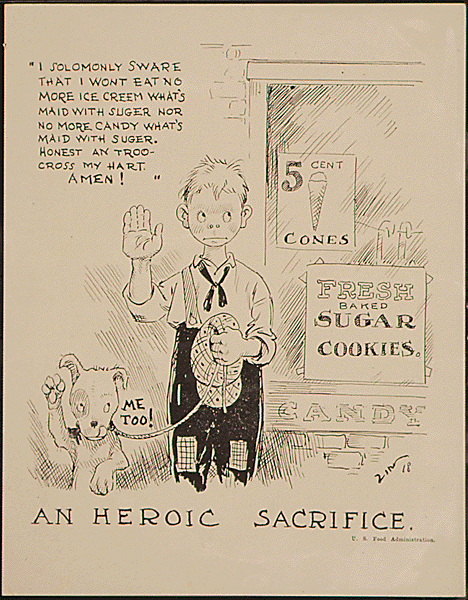
“Art”-tic Exploration
What better way to experience the arctic than by looking at trading cards from the comfort of your own air-conditioned home. Artist Albert Operti illustrated 49 different cards depicting explorers. Take a peek at a sample from the set, and collect more knowledge about the arctic tundra and its explorers.
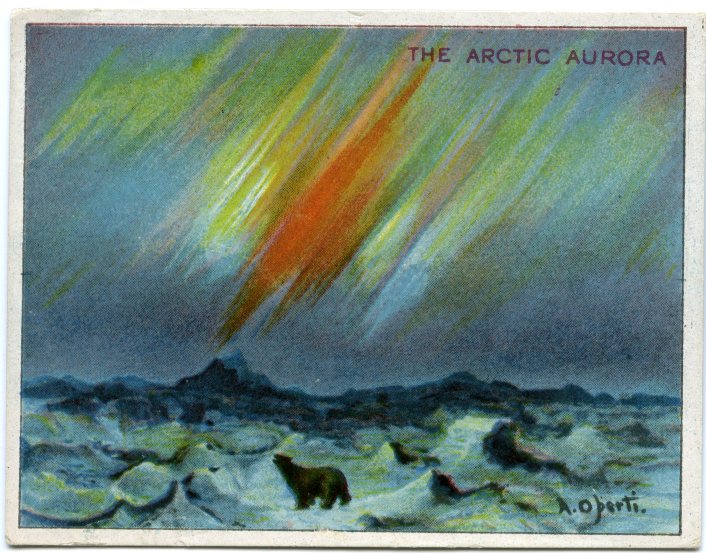
Hunting in the Himalayas
For all your future expeditions in search of the elusive Yeti, the “abominable snowman,” please make sure you pack all the necessary cold weather supplies for a trek in the Himalayas, and follow these regulations that were established by the government of Nepal in 1959.

Cool Companions
Sled dogs were important participants in early polar exploration. They provided explorers with a means of transportation through the arctic terrain, AND they were top-notch furry friends. These dog sketches from the Baldwin-Ziegler Polar Expedition of 1901 seem to have been left unfinished – download them and color them to show how you think these pups may have looked back then.


The Flower and I
Fifteen-year-old Ralph Kuznitzki wrote “The Flower and I” in 1944 for a school assignment at a refugee camp he lived in after immigrating to the United States. The poem describes his thoughts about living in America. The flower he discovered on a walk represents “a symbol of hope for a home for myself and a fatherhood for me and my descendants.” This essay was so inspiring that it was sent to the Secretary of the Interior. But the question remains: what grade did his teacher give him?!

Beauty and Grace
While First Lady Jackie Kennedy is well known for her keen sense of style and the influence she had on fashion around the world, she accomplished much more than that. Check out this picture book biography to learn more about her childhood and tim e in the White House that led to her become such a powerful figure.
e in the White House that led to her become such a powerful figure.

From Hoop Skirts to Shorts
Even back in the day, style needed to change during the hot summer months. In the 1800s, women were searching for a way to keep heavy dress fabric away from their skin, and thus, the hoop skirt was born. This patent shows the inner workings of such a skirt and how cumbersome this style was. How thankful are we for shorts!
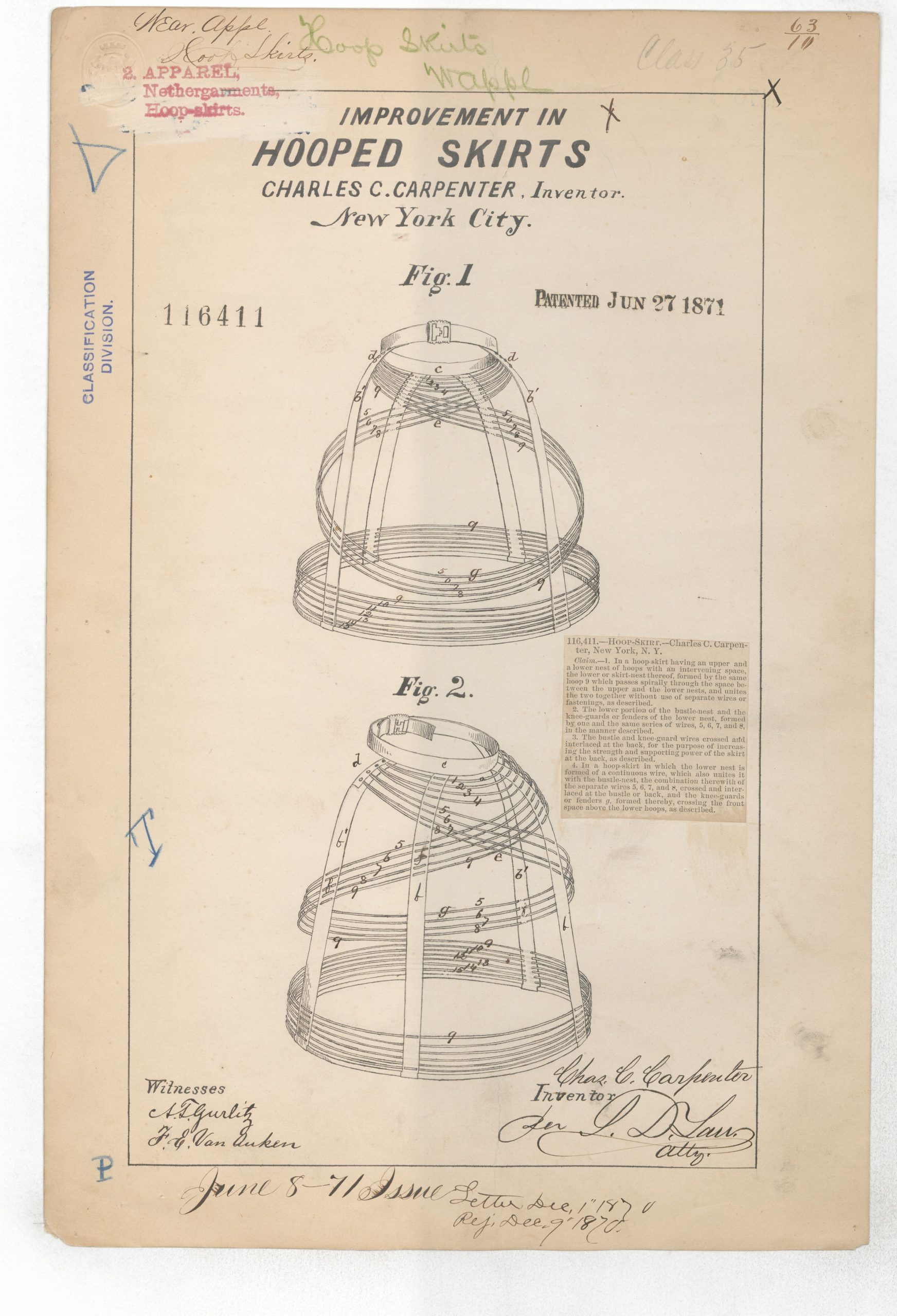
I’ll Dress Myself Today
There comes a certain time in every person’s life when they feel responsible enough to make their own fashion choices. For President John F. Kennedy, this moment came when he had just entered his teenage years at Choate Academy. He wrote to his mother that he had received the suit she sent, but that he “did not like the color and it was a pretty itchy looking material.” We can only imagine what the suit looked like to so displease young JFK.
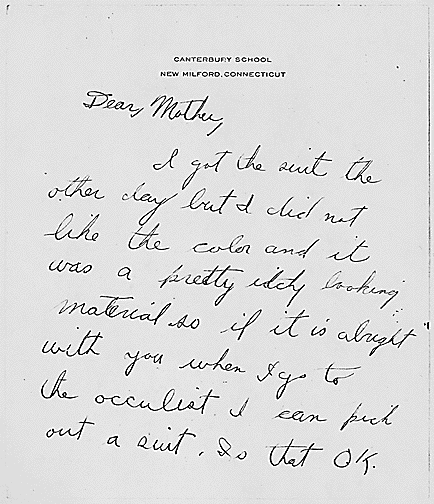
FLOTUS Fashion
First Ladies and their fashion not only served as an outward display of style, but were also used to advance their own (and their husbands’) agendas on special causes and politics. Explore some of the most memorable First Lady Fashions on the National Archives Pinterest page, and then head over to the Eisenhower Library to put together a puzzle of Mamie’s inaugural gown.


Smile for the Camera––Or Not
The National Archives holds many original records written by George Washington about his experiences in early America, but one in particular describes a more superficial problem he had: dealing with the 18th century equivalent of the paparazzi––portrait artists. In this letter to his friend Governor Henry Lee of Virginia, Washington described how “heartily tired” he is of these portrait artists.

Dear Diary…
What must life be like for a teen living in the White House? In 1975, First Daughter Susan Ford gave Americans a glimpse behind the curtain when she began writing a monthly column for Seventeen magazine. Check out clippings from her White House diary, in which she talks about everything from boys to her mother’s battle with cancer to the letters she received from the public.
 |
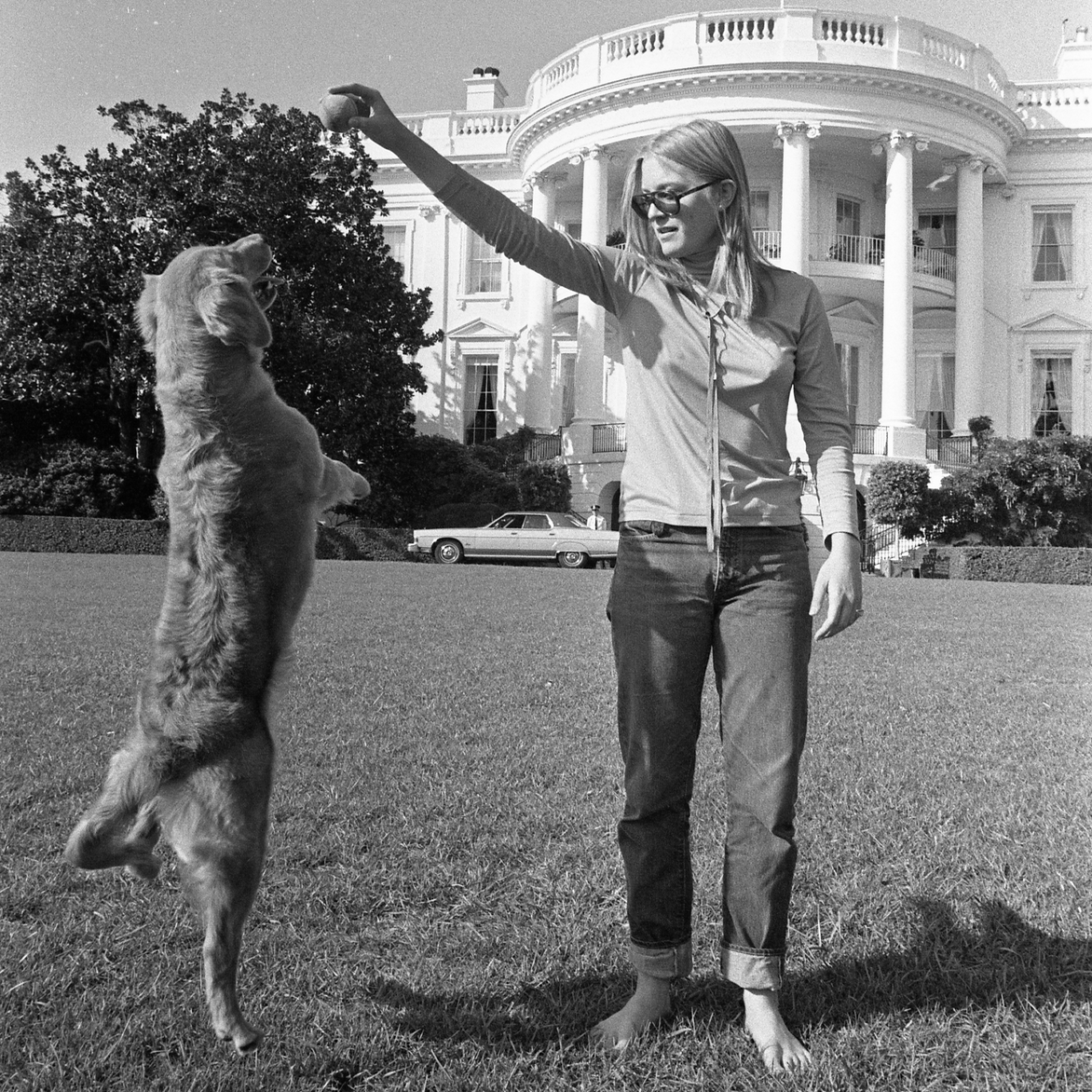 |
A Little Country Boy
Forest Delano Roosevelt Ferguson wrote to the President when he was just 8 years old. While he thought his original letter was lost, his daughter did some digging more than 70 years later and found it in the Franklin Delano Roosevelt Library! In block print, little Forest chatted with his namesake like they were old pals, telling him how he got in trouble for talking too much. He even included this picture of himself for the President to keep.
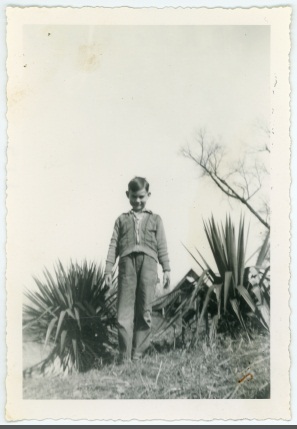 |
 |
History is Now
This group of second graders provided a unique perspective of the 1965 inauguration of President Lyndon B. Johnson. Just as history is made when a president is elected, it continues to be made each and every day. Take a page from the scrapbook of these youngsters and create your own poster, drawing or journal entry describing a situation you’ve experienced recently. Your firsthand account of history may live on forever for future generations.
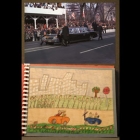 |
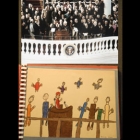 |
History Made by YOU
Speaking of your role in shaping history, have you heard of My Wish for U.S.? Tell us what your wish is for America for the next 250 years, and take the first step in being part of history today.

How to Build a Flying Saucer
Ever wondered what the inside of a flying saucer looks like? In the 1950s, the U.S. Air Force hired a Canadian company to design and create a disc-shaped craft that was supposed to take off and land vertically, moving four times as fast as the speed of sound. Curiously, this aircraft quite closely resembles those flying saucers that were ever-so popular in sci-fi novels around the same time. This craft made it to testing…but unfortunately, it only reached 35 miles per hour and couldn’t get very high off the ground. Chalk it up to an alien-tasic pipe dream!
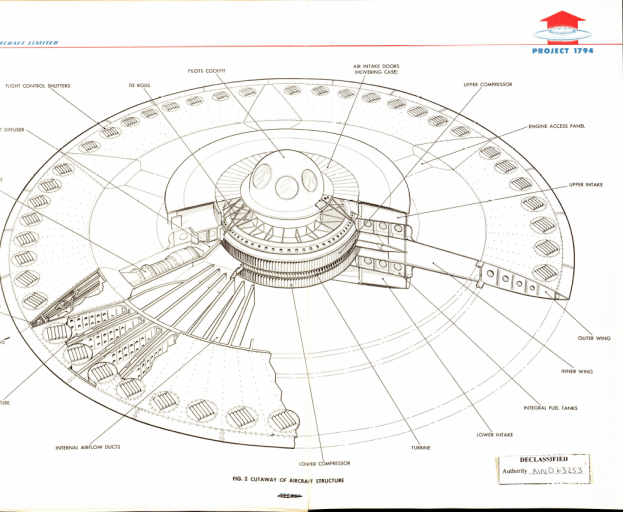
Saucers over Washington, D.C.
This comic strip from the National Archives holdings illustrates a UFO sighting from July 19, 1952. Just after midnight, radar controllers observed seven strange objects appearing on the control center over restricted areas of Washington, D.C.––including the White House and Capitol! Their response is depicted in this comic, in which the Air Force determined that these sightings were simply caused by temperature inversion. But there are “just two points, boys” for why that might not be the case…
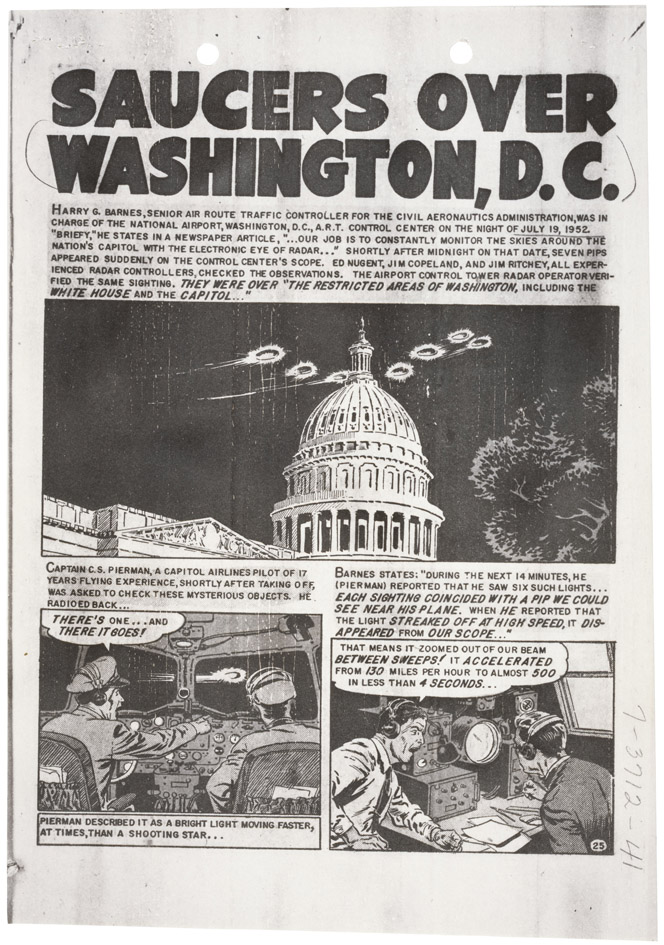 |
 |
Take Us to Your President
Get ready as we drop a catchy new track Archives-style. Believe it or not, President Richard Nixon was given several songs by members of the public to commemorate the Apollo 11 moon landing––including one titled “Take Us to Your President.” Listen for yourself for a rather different perspective of those “who may be among you soon.”
After jamming out with aliens, try your hand at this JFK Moonshot AR Experience from the John F. Kennedy Presidential Library.
Teddy’s Bear
Not only did President Roosevelt protect our national parks, we also have him to thank for our favorite stuffed animal!
During one hunting trip in 1902, Roosevelt refused to shoot an old bear. The story quickly got out, and cartoonist Clifford Berryman took the tale and used it to poke fun at the President through this comic. Morris Mitchum, a Brooklyn shop owner, took inspiration from the comic and made the first stuffed toy bear, naming it “Teddy’s Bear” in dedication to the President.
Declare Your Independence, Again
Not only does Uncle Sam want you, Thomas Jefferson does too. Get a sneak peek of tomorrow from the Founding Father himself. Wait until you hear what he thinks of the King of England!
HBD Uncle Sam
The Founding Fathers seem to get all the attention on July 4th, but don’t forget about America’s Uncle! While legend has it that this iconic bushy-bearded man came into popular use during the War of 1812, our records show that he truly rose to prominence as a recruitment tactic during both world wars.
Fun at the Fair
The United States has hosted many a World’s Fair over the years, with the primary purpose of showcasing international exhibitions and the achievements of nations. However, a typical American celebration can certainly be experienced by reading this full schedule for the 1939 New York World’s Fair, including an opening concert, grand parade, fireworks and even dancing in the streets.


A (Hot) Dog’s Best Friend
Ketchup is an all-American staple that pairs perfectly with summer barbecues. But did you know that “catsup” originated in the United Kingdom and was just a broad term for any kind of spiced sauce?
Americans were the first to create ketchup with tomatoes, a crop native to North America, and an 1896 issue of The New York Tribune even declared tomato ketchup to be America’s national condiment found “on every table in the land.” The most famous tomato ketchup is the Heinz 57 variety. Apparently, founder Henry Heinz purposely created his own spelling of “ketchup” to differentiate from his “catsup”-peddling competitors.
Learn more about the hot dog’s BFF here.

Roughin’ It
A hot dog’s other best friend is the invention that cooks it to perfection while you’re out breathing the fresh air of the great outdoors. Check out this patent for a camp stove by D. L. Miller in 1904. We like to imagine this invention stemmed from Miller growing tired of roasting them on sticks over the fire!
Happy Camper
Going to summer camp is often a rite of passage for most kids––even though it might break their mother’s heart. When Allan Hoover headed off to camp in Wyoming, First Lady Lou Hoover missed her son so much she started sending him letters nearly every day! Allan finally wrote back at the end of camp, saying, “I really feel guilty as a fool for not having written before.” He ended up writing her a 23-page letter the next day about his many camp adventures, which thrilled his mother.
Soak up the Sun…and Pie?
Celebrate “Great Outdoors Month” by testing your nature knowledge with this fun quiz, and safely spend some time outside with this Backyard Bird Bingo activity from the National Parks Service.
Once you’ve worked up an appetite, here’s some pie recipes for you to share with friends (or gobble up yourself like the winner of this pie eating contest).

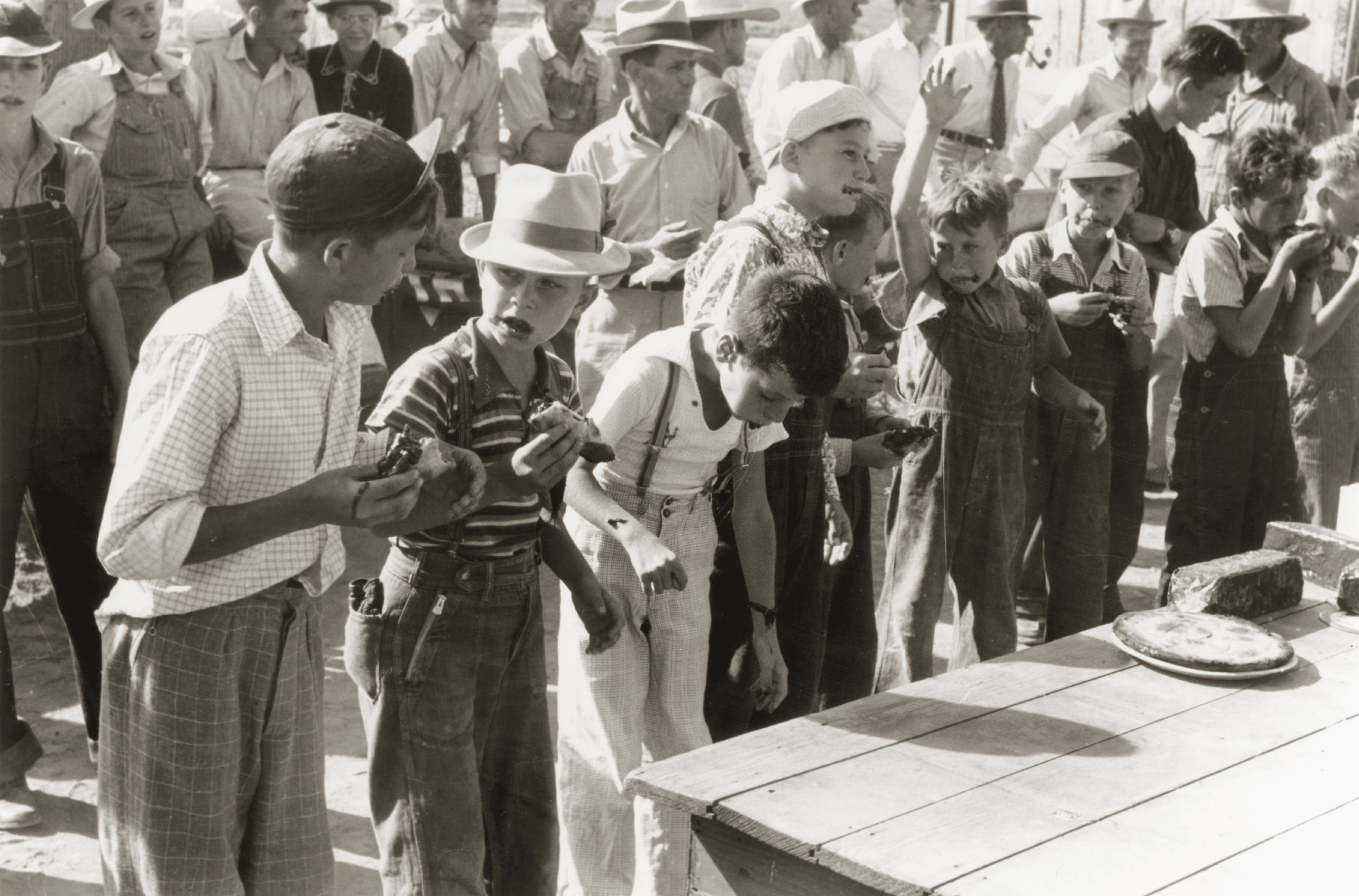
Happy Camper
Going to summer camp is often a rite of passage for most kids––even though it might break their mother’s heart. When Allan Hoover headed off to camp in Wyoming, First Lady Lou Hoover missed her son so much she started sending him letters nearly every day! Allan finally wrote back at the end of camp, saying, “I really feel guilty as a fool for not having written before.” He ended up writing her a 23-page letter the next day about his many camp adventures, which thrilled his mother.
Fatherly Advice
We all know that no matter how old we are, guidance and support from dad is a priceless gift. President Gerald Ford not only raised his teenage daughter Susan while in the White House, but also jotted down some advice to all teenage daughters after reflecting on his own lessons learned in life. Check out what words of wisdom he had to offer to America’s daughters.
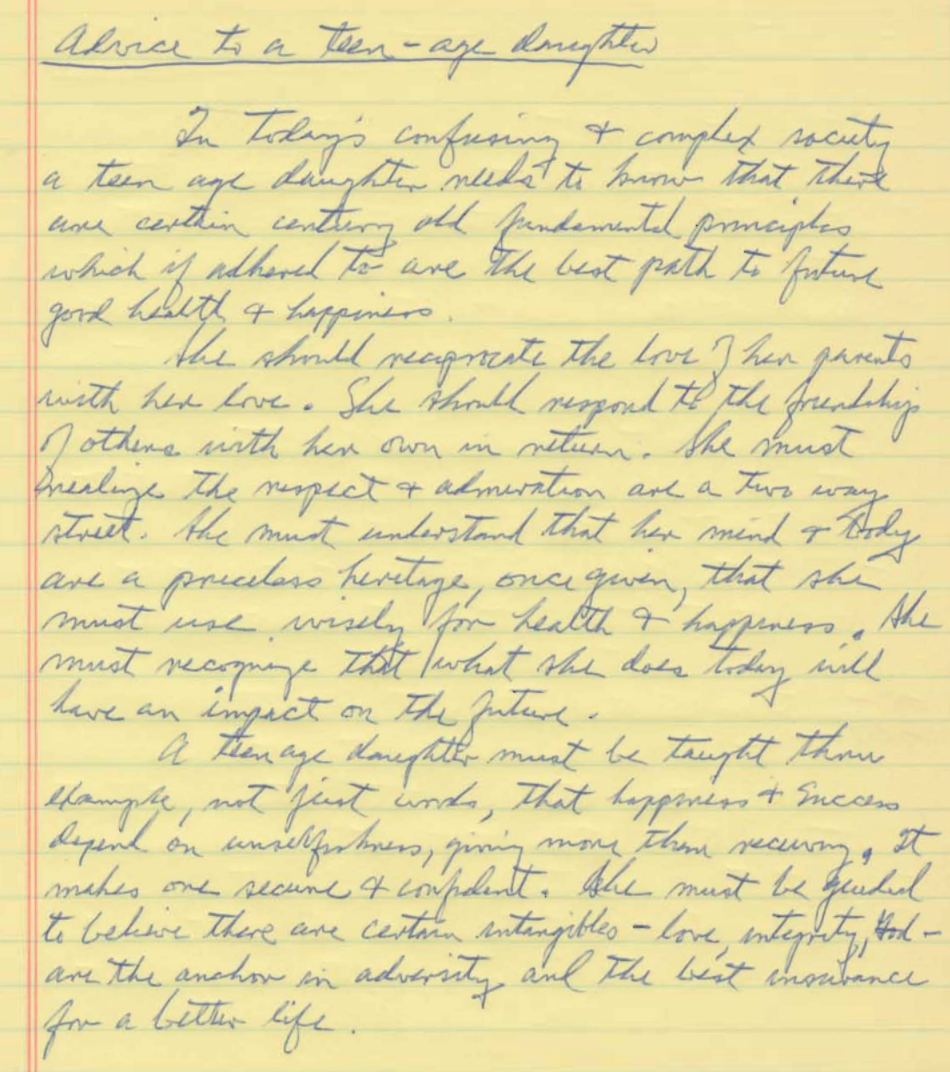
Fathers Were Freed (Finally)
Juneteenth marks the moment when the last enslaved people in Galveston, Texas found out they were free. This news came late––2.5 years after President Abraham Lincoln signed the Emancipation Proclamation calling for enslaved people to be freed.
This letter from a formerly enslaved man, Samuel Cabble, was sent to his wife telling her he had enlisted in the Union Army in 1863. He wrote that he “looked forward to a brighter day when I shall have the opportunity of seeing you in the full enjoyment of freedom.” Once the Civil War was over, Cabble went home to his wife and had a son of his own. Can you imagine how this father felt knowing his son would never be enslaved?
A Lasting Letter to POTUS
Letters to the President of the United States are an important way for citizens to participate in democracy. Did you know that most letters written to the President eventually ends up at the National Archives?
This letter was written to President John F. Kennedy in 1963 by a young boy, Tom Oberdorfer, from Washington, D.C. In the letter, Tom urges the President to protect black Americans from racially charged violence in Birmingham, Alabama.
Ruby Bridges Goes to School
On November 14, 1960, 6-year-old Ruby Bridges made history when she became the first black student to integrate an elementary school in the South. Until this time in American history, most schools were separated for white students and black students. Ruby Bridges’ courageous act to attend the all-white William Frantz Elementary School was an important moment that opened up equal access to education for young people.
Founding Father Thomas Jefferson Honors Class of 2020
A Big Foot in the Archives
In addition to President Nixon’s speeches, orders and photographs, did you know the Nixon Presidential Library has a 200-million-year-old dinosaur track? That’s right, the impression was made from a track of a Eubrontes Gigantes—which would have stood approximately nine feet tall. It was made in 1970 by a teenage boy who had heard a news report about the discovery of dinosaur tracks in an abandoned quarry near his New Jersey home. He and his friend jumped on their bikes, went to investigate and uncovered thousands of fossilized dinosaur tracks.
When they launched a successful campaign to preserve the site as an education park, they earned an official commendation from President Richard Nixon. One of those boys, Paul Olsen, is today one of the nation’s foremost paleontologists, recently elected a member of the National Academy of Sciences.
Image: Paul Olsen in front of the dinosaur footprint he sent to President Nixon nearly 40 years earlier.
Suiting up for Land and Sea
During a famous operation in World War II called D-Day, the United States and our allies had to prepare for an attack that started at sea and ended on land. In this drawing from the National Archives holdings, you can see the specially designed outfits soldiers wore for swimming in the ocean and running on the beach. Want to learn more about D-Day? View the story of D-Day through gifs made with film from the National Archives.

What’s inside Your Lunchbox?
Lunch is our second favorite subject in school (after history, of course). But it’s not an easy feat to cook for lots of hungry students. Luckily, these 1946 recipes from the Bureau of Human Nutrition and Home Economics will feed 100 people. What do 16 eggs and 8 pounds of ham make? Enough ham loaf for the entire school. Hope you’re hungry!
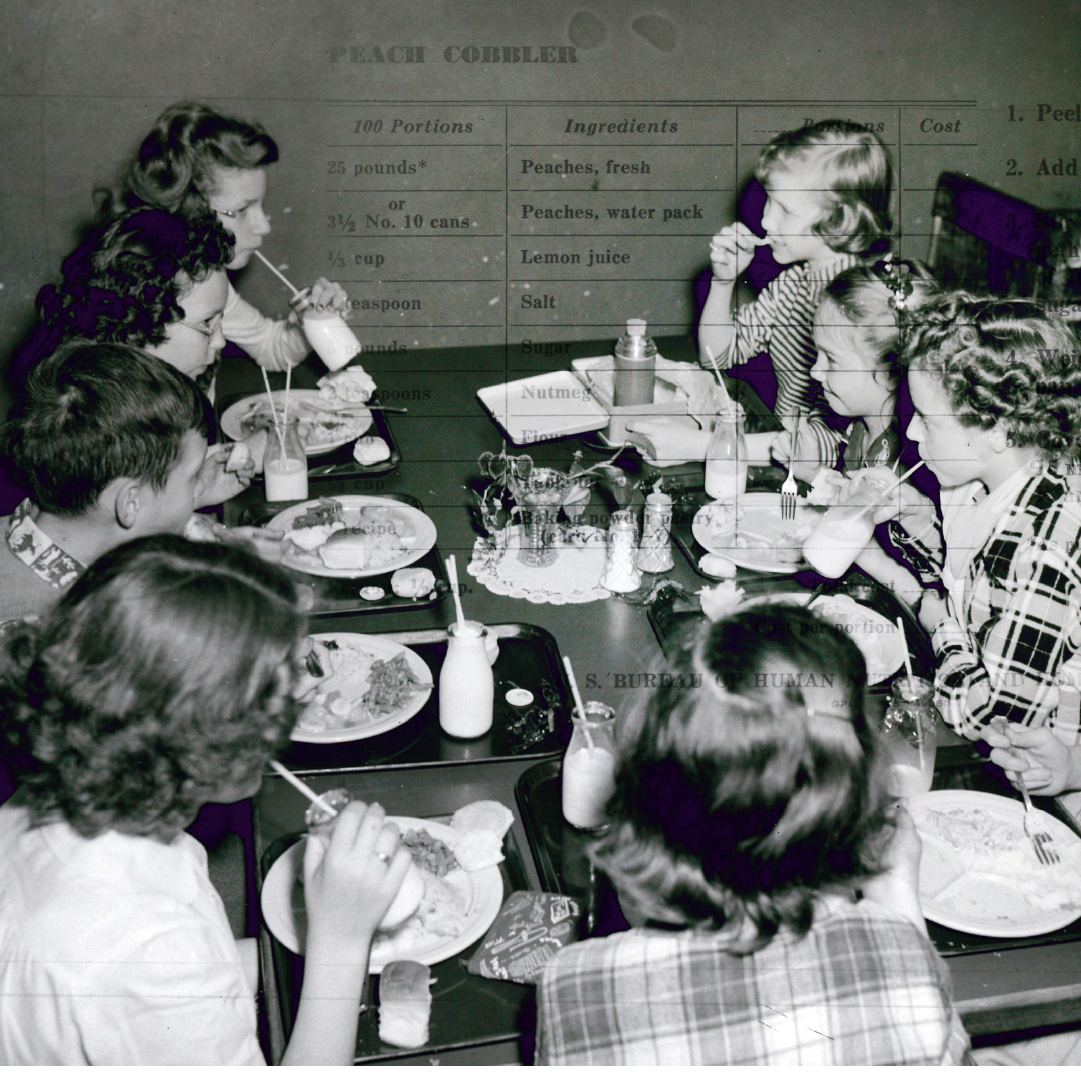 |
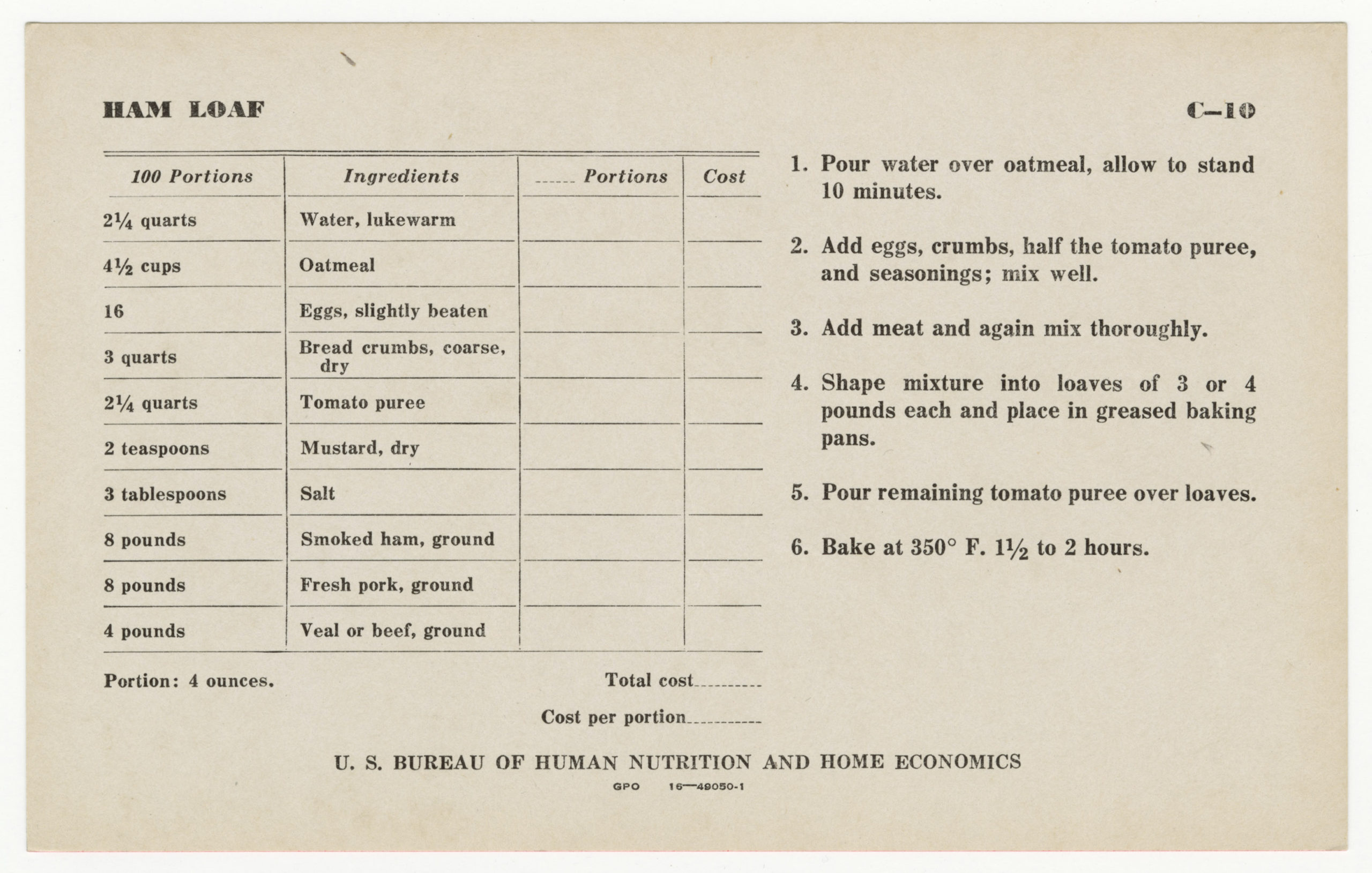 |
Caption Contest: Announcing the Winner!
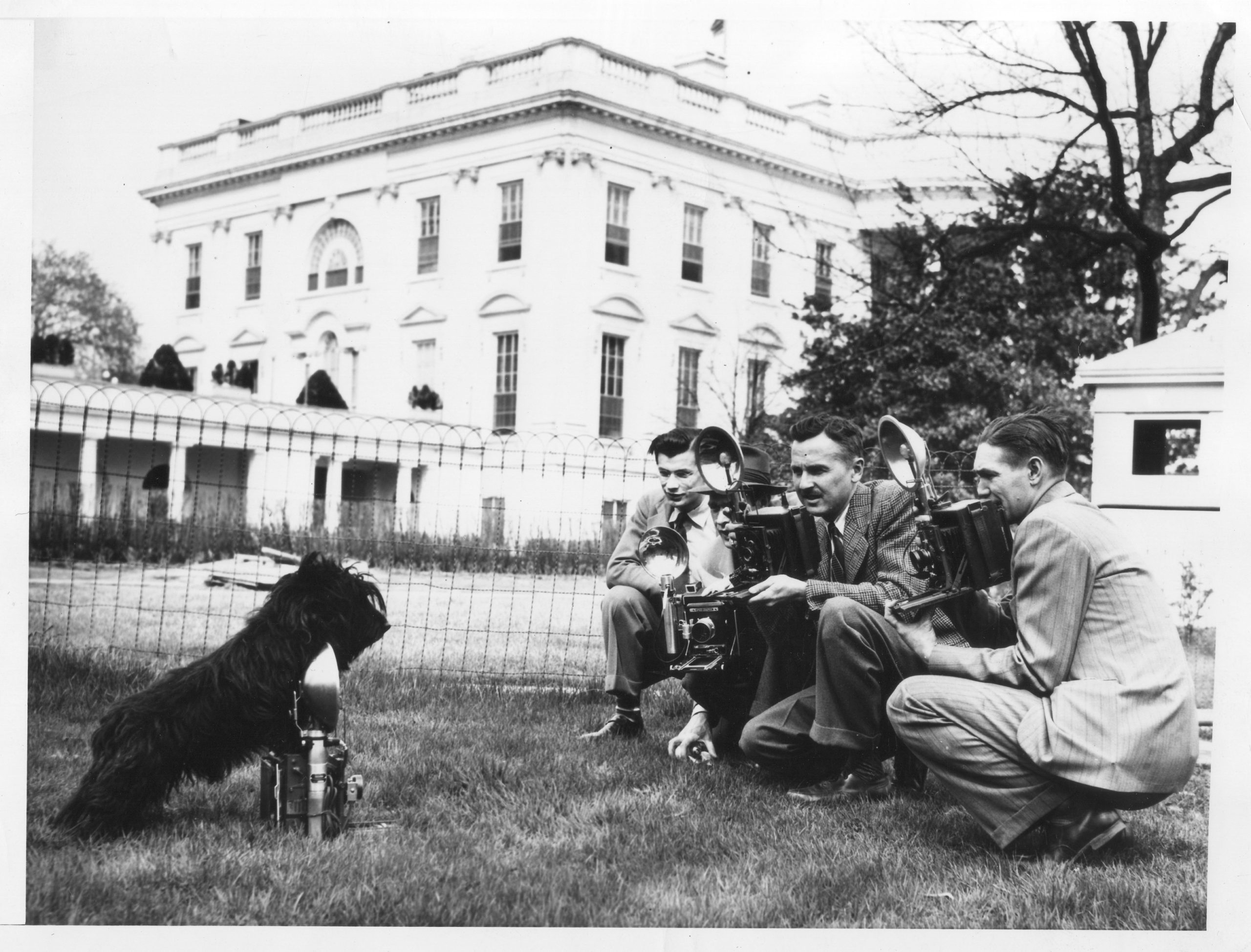
And that’s when I said, “cat got your tongue?”
Moms Get It Done
Our moms have always stepped up to the plate to get important work done. During World War II, while men were fighting overseas, women took their spots on the production lines in factories to make essential supplies for the war. This marked an important milestone for women in the workforce. 💪And as a bonus, it provided us with some pretty great gifs!
 |
 |
 |
When You Wish upon a Star
Who’s the leader of the club that’s made for you and me? That’s right, it’s Mickey Mouse and his infamous creator, Walt Disney. The Disney company has a rich history in the Archives. But it wasn’t smooth sailing in the beginning. We have the bankruptcy file for Walt’s first animation studio, Laugh-O-Gram, which folded in just one year. But the venture wasn’t a total failure. Word on the street is that a brave little mouse who used to visit Walt at that studio eventually became inspiration for Mickey himself!
Smokey’s Self Pawtraits
You may know Smokey the Bear for his fire safety tips––he can stop, drop and roll with the best of them! But did you know that he’s also an expert in catching butterflies and making plaster casts of animal tracks? That’s right, he was quite the Boy Scout in his day. Learn all his tricks of the trade from this 1959 comic book.
 |
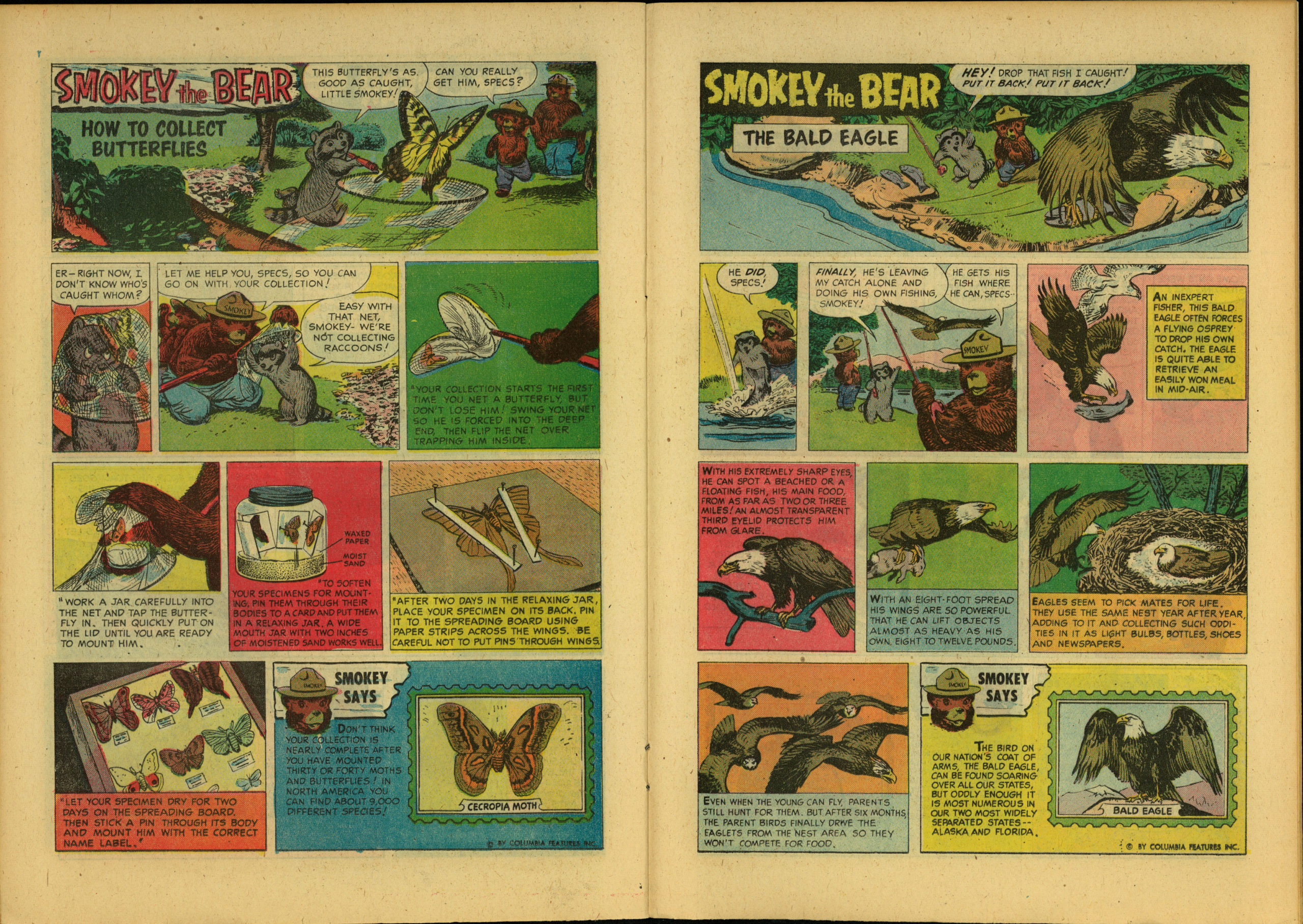 |
Off-roading Moon Buggy
In 1971, Apollo 15 became the first mission to use the Lunar Roving Vehicle (LRV). That’s right, the Apollo 15 crew drove a specially designed vehicle on the moon so they could explore more of the lunar surface. But don’t forget, there’s no speeding on the moon! This LRV drove 17 miles in three hours and two minutes.
The Apollo 15 crew had a lot of practice before they went off-roading on the moon. Astronauts Jim Irwin and Dave Scott trained in the LVR at Cinder Lake, Arizona where volcanoes erupted thousands of years ago. Cinder Lake was designed by the United States Geological Survey’s Branch of Astrogeology to simulate the cratered surface of the Moon. Practice makes perfect!
[Source]

Easter Egg Roll
The White House Easter Egg Roll—when kids race decorated eggs to the finish line with big spoons—is a tried and true tradition dating back to 1878. But like all good traditions, it took some trial and error to nail down the process. One of the smelly errors? When Pat Nixon organized a White House egg hunt with hard-boiled eggs. The kids had a grand time, but not all the eggs were found until days later, when they started stinking up the White House lawn. What a rotten deal!
On the brightside, First Lady Pat Nixon redeemed herself when one of her staffers wore a fluffy white bunny costume to the festivities in 1969. At this moment, the White House Easter Bunny became an official tradition.
[Source]
Weekends Are for Waffles
What are the grooves for in waffles? For the answer, you’d have to travel back in time to 1869 and chat with Dutch American Cornelius Swartwout, who received a patent for the first waffle iron. Thanks, Cornelius, for this glorious honeycombed griddle that’s become a staple in American homes.
Image: Cornelius Swartwout’s “Waffle Iron,” patented August 24, 1869. (U.S. Patent No. 94,043)
While we wait for a time machine, let’s just say the grooves are to hold extra syrup and whip up a batch of waffles! Try President John F. Kennedy’s favorite waffle recipe this weekend.
JFK’s Favorite Waffles
Ingredients
- 1/2 cup butter
- 1 tablespoon sugar
- 2 egg yolks
- 7/8 cup milk or 1 cup buttermilk
- 1 cup and 1 tablespoon of sifted cake flour
- 1 pinch salt
- 2 stiff beaten egg whites
- 4 teaspoonsful baking powder
Instructions
-
- Cream butter and sugar, add egg yolks. Beat. Add flour and milk alternately. This may be done at any time. When ready to bake fold in egg whites, and add baking powder.
- Mixture should be thick and fluffy.
- Bake and serve with hot maple syrup and melted butter.
[Source]
Storytime with Abigail Adams
Journey back in time with us as founding mother, Abigail Adams, takes us back to 1810 to read a special story, The Entertaining History of Giles Gingerbread, a Little Boy Who Lived Upon Learning.
Produced for the National Archives Foundation by American Historical Theatre, www.ahtheatre.org.




